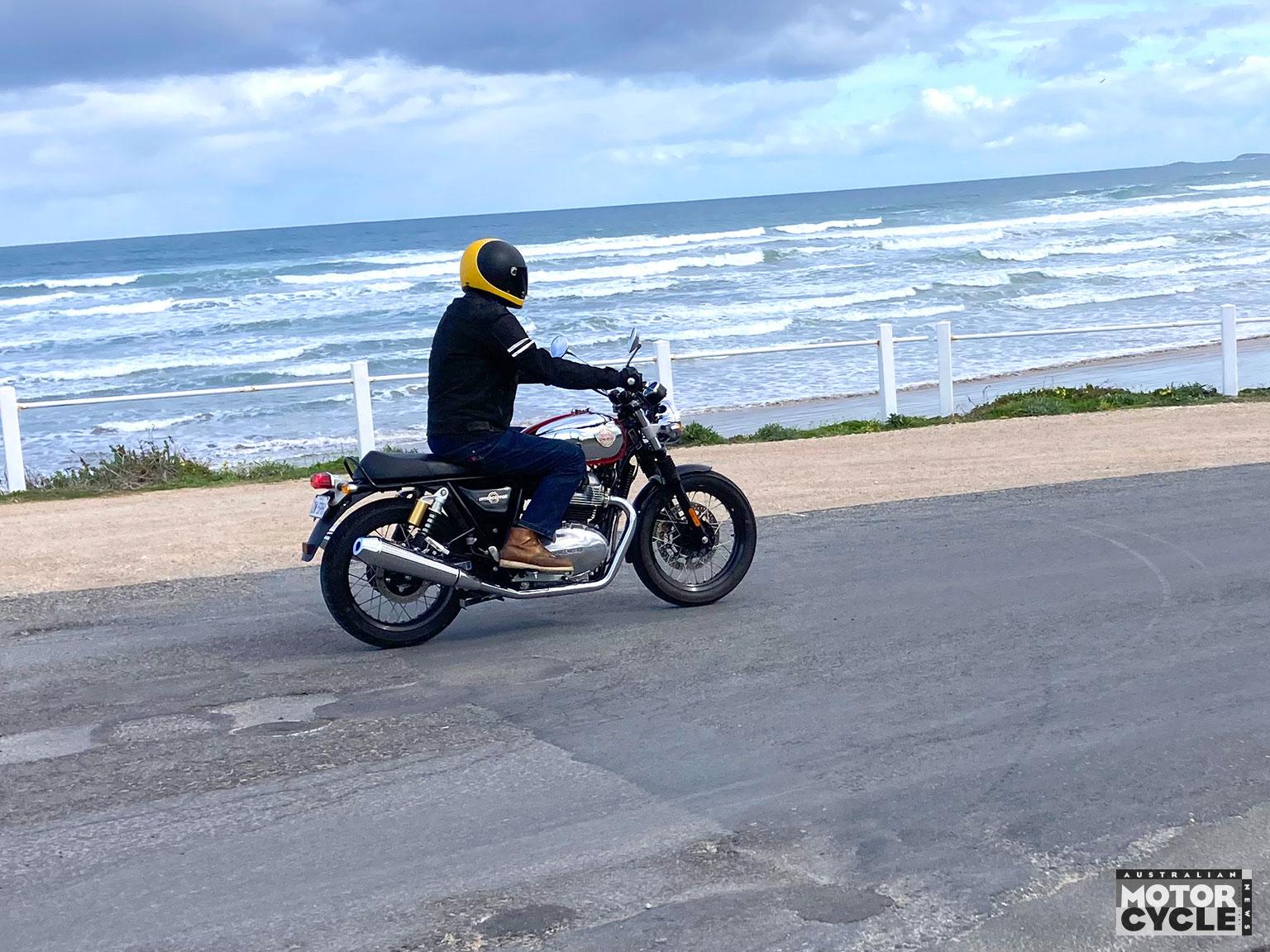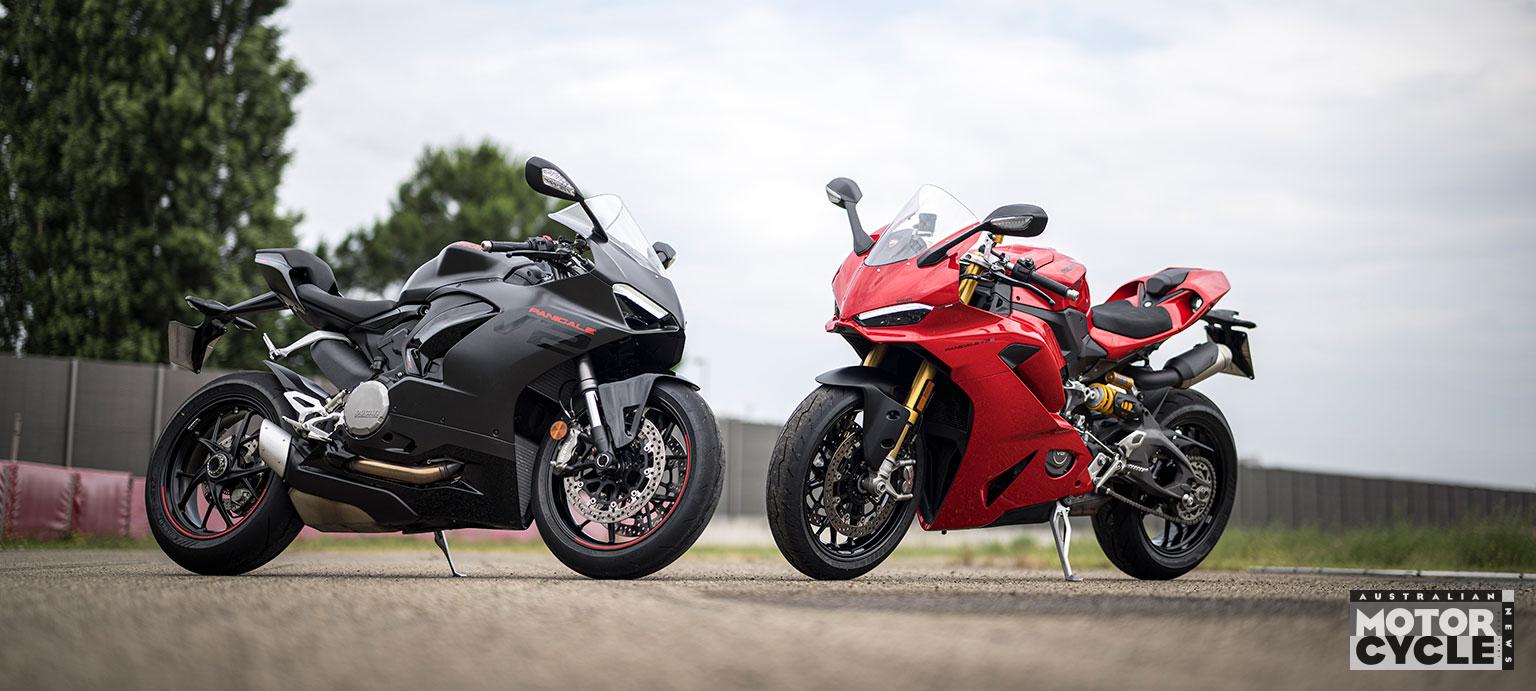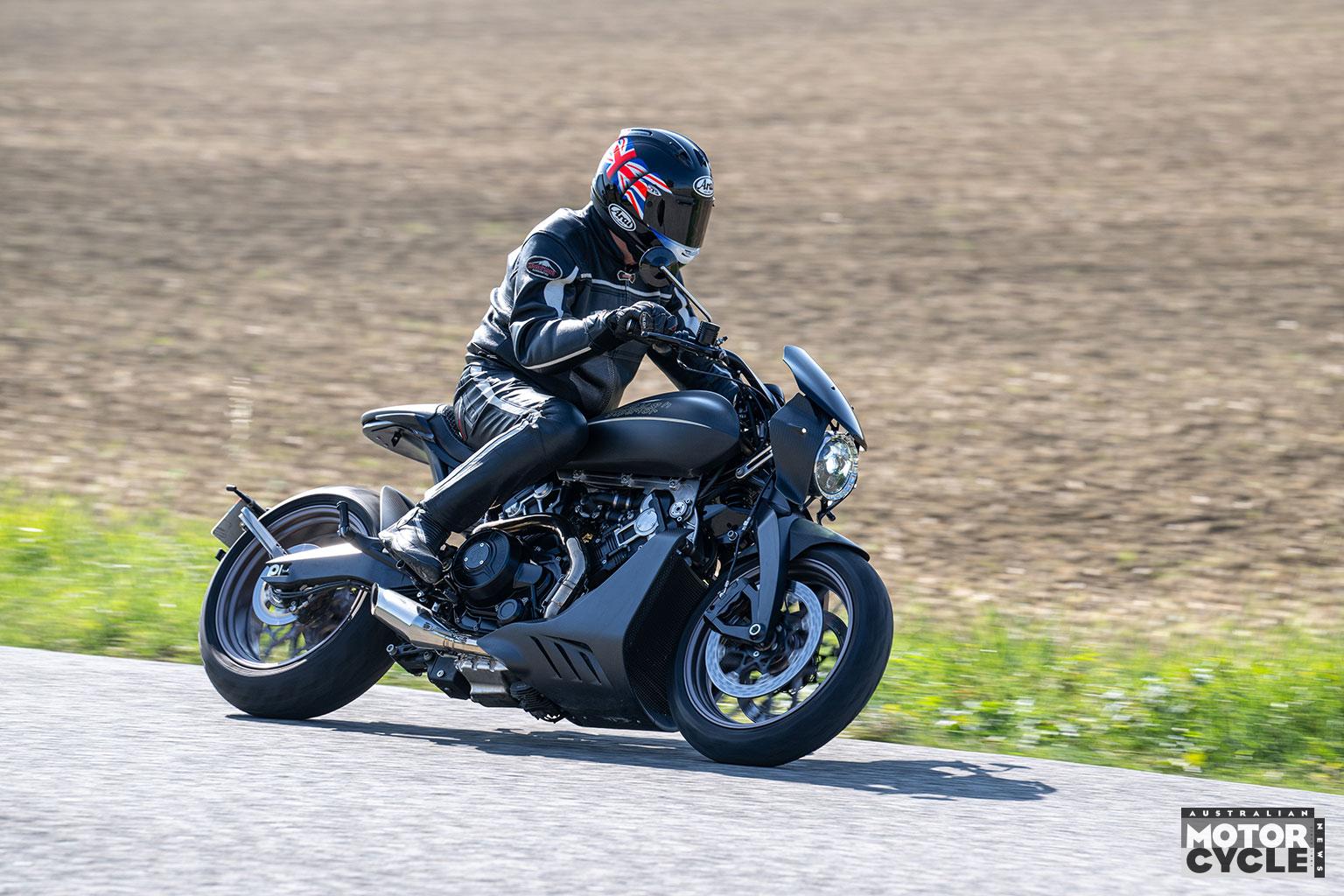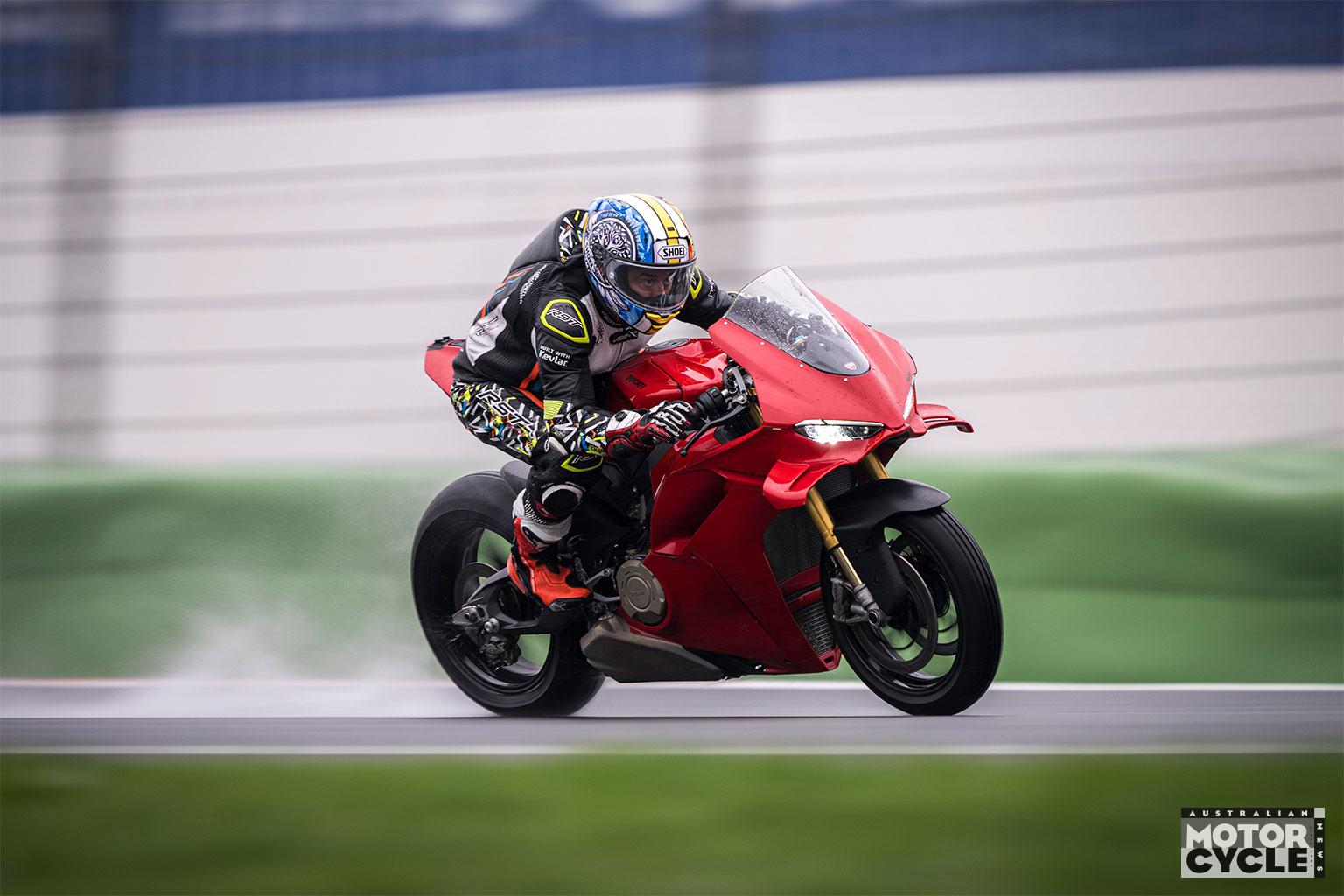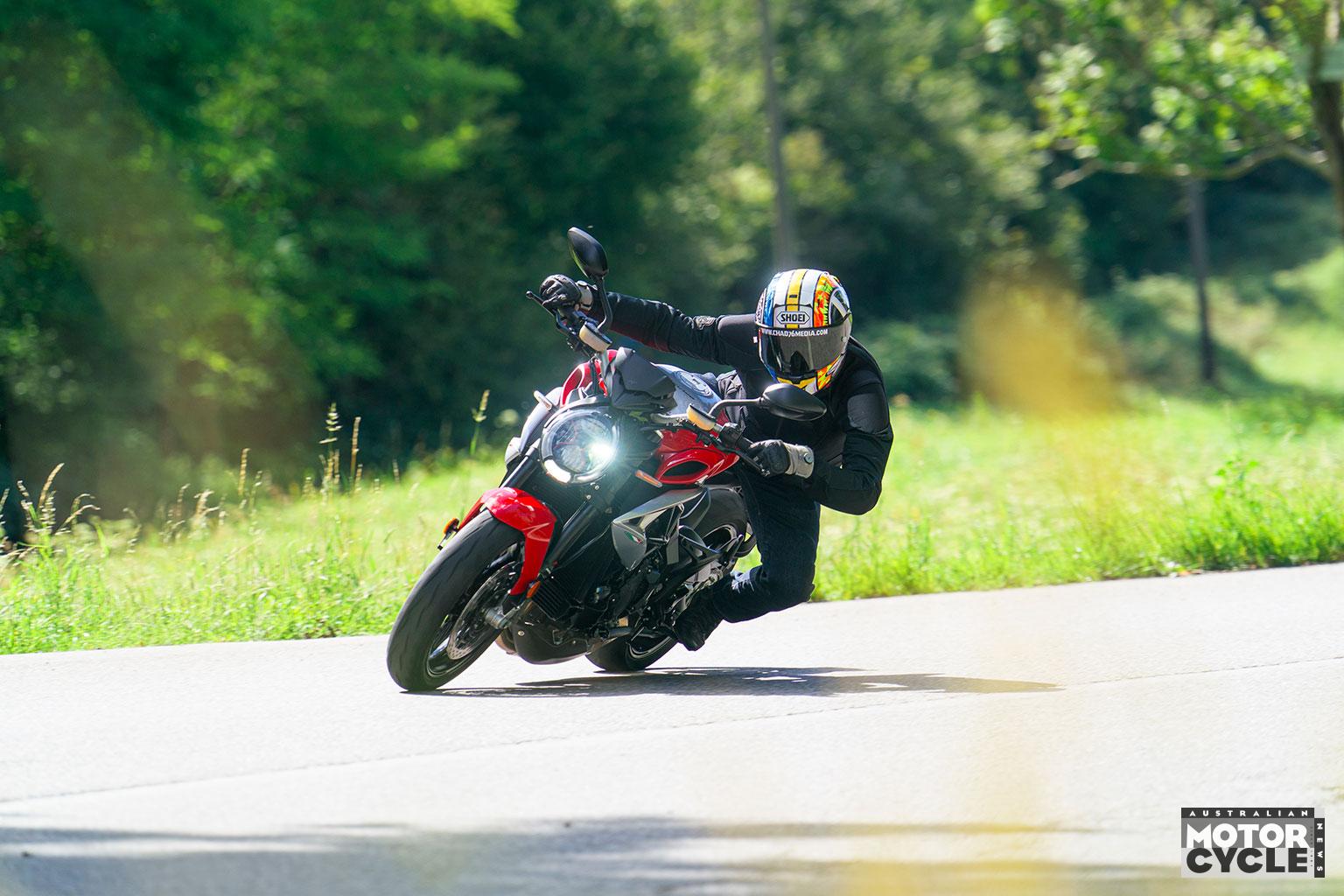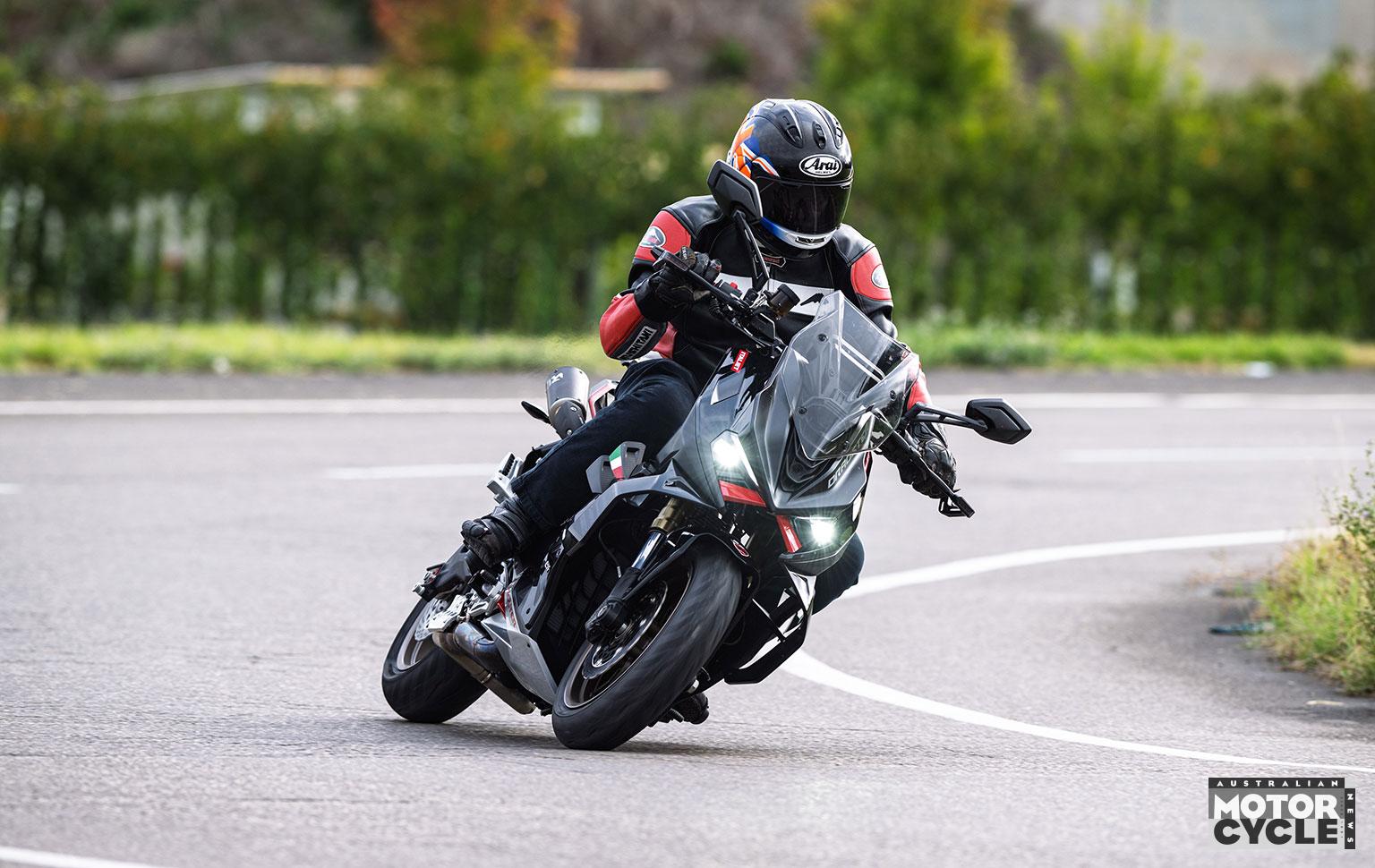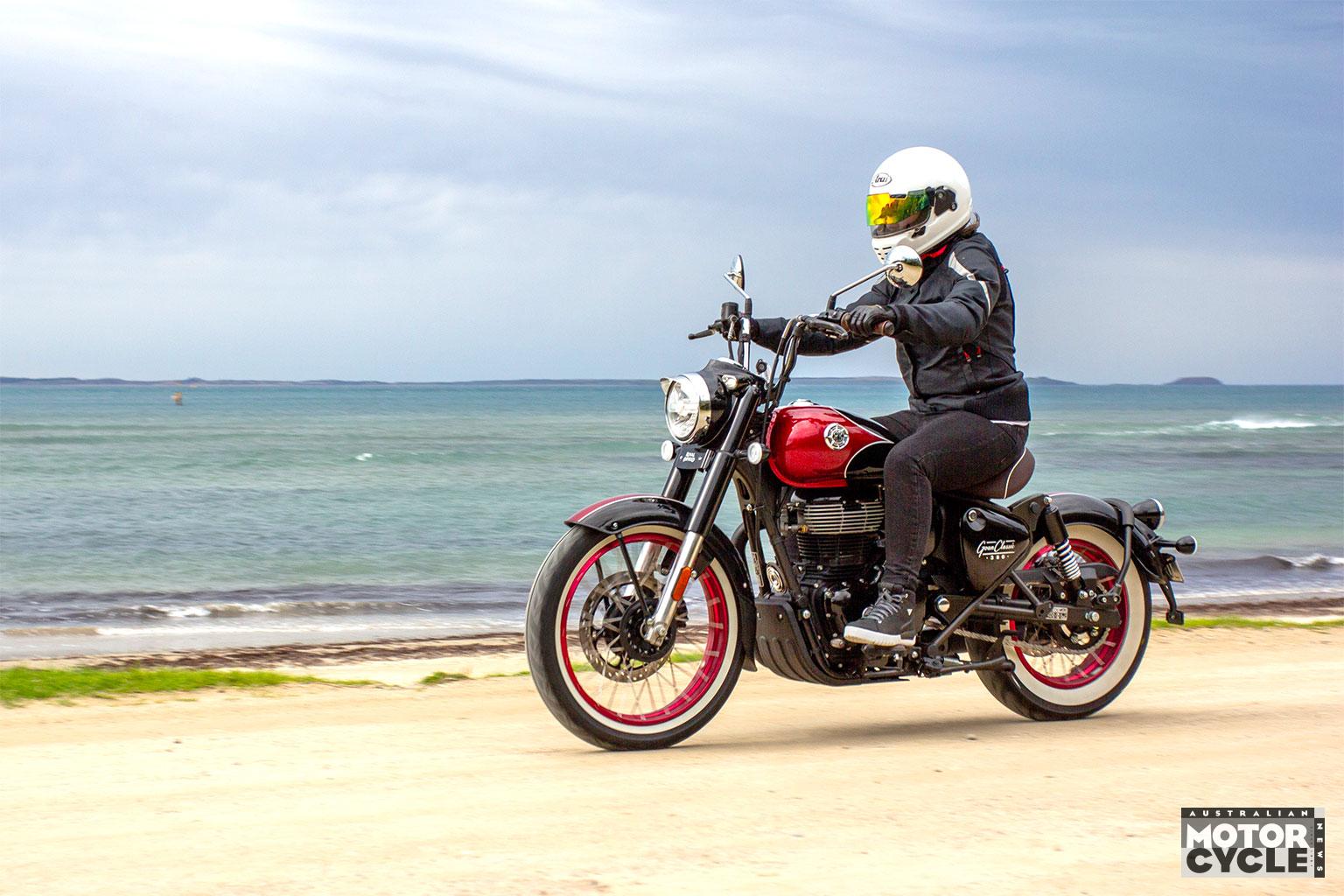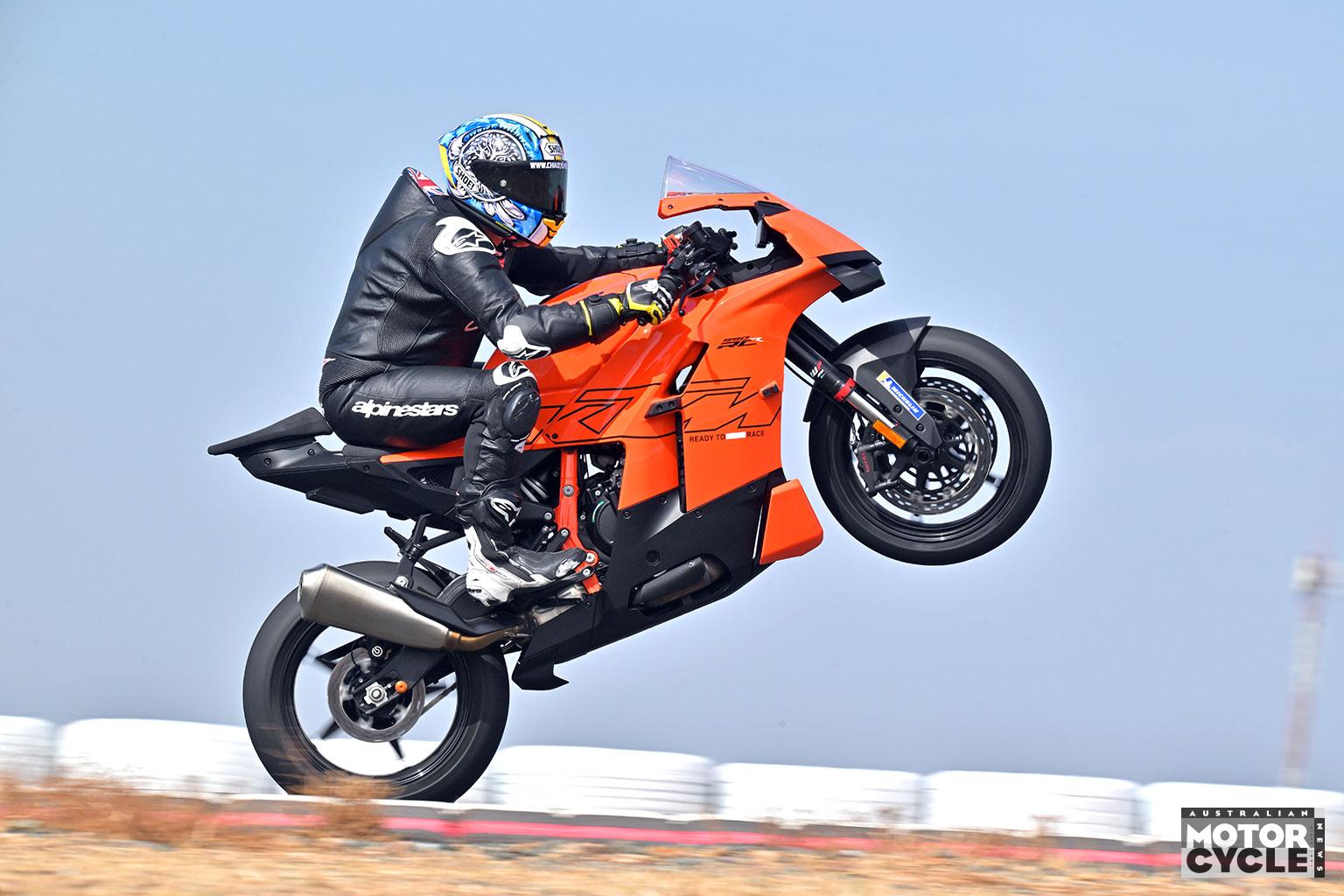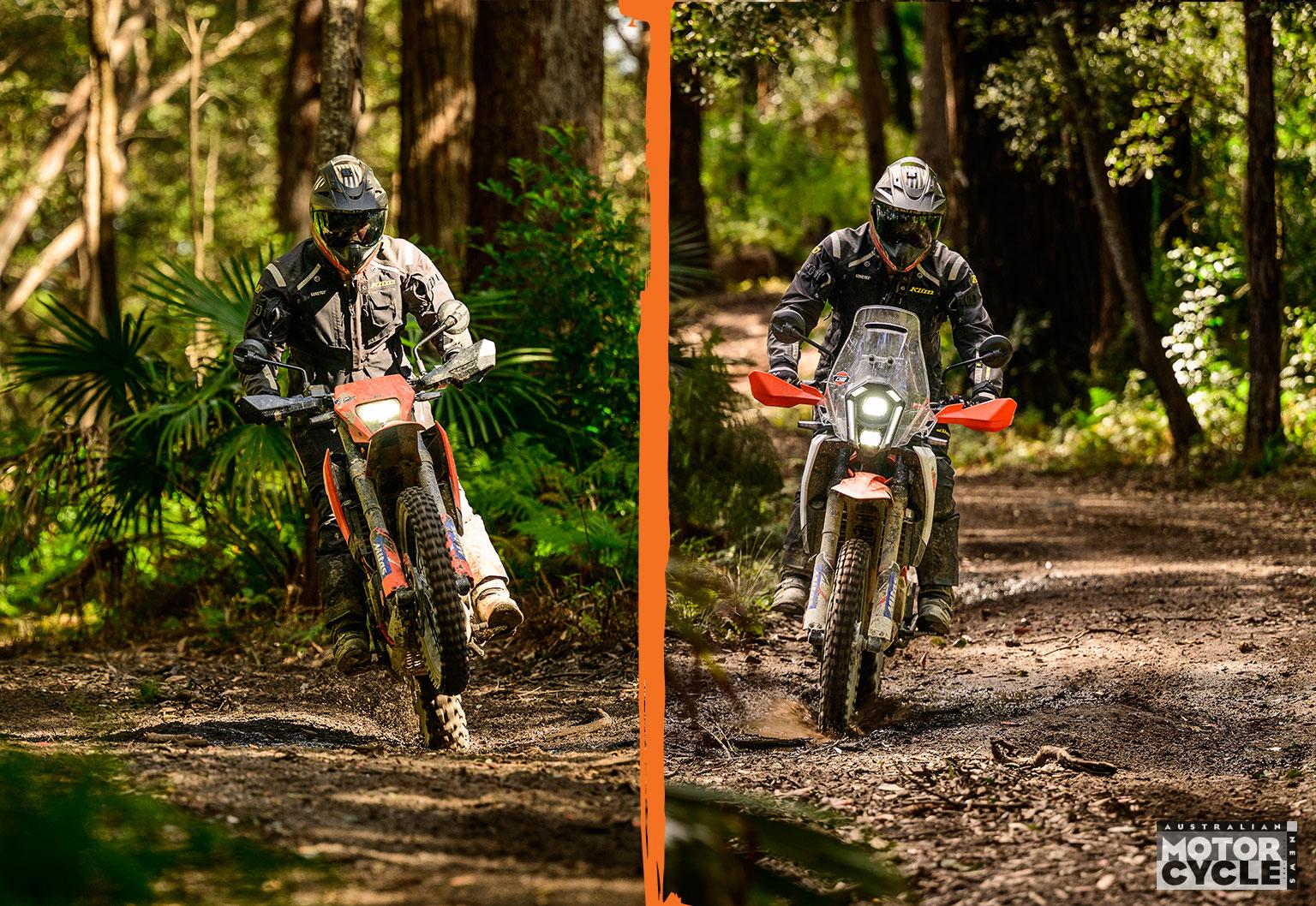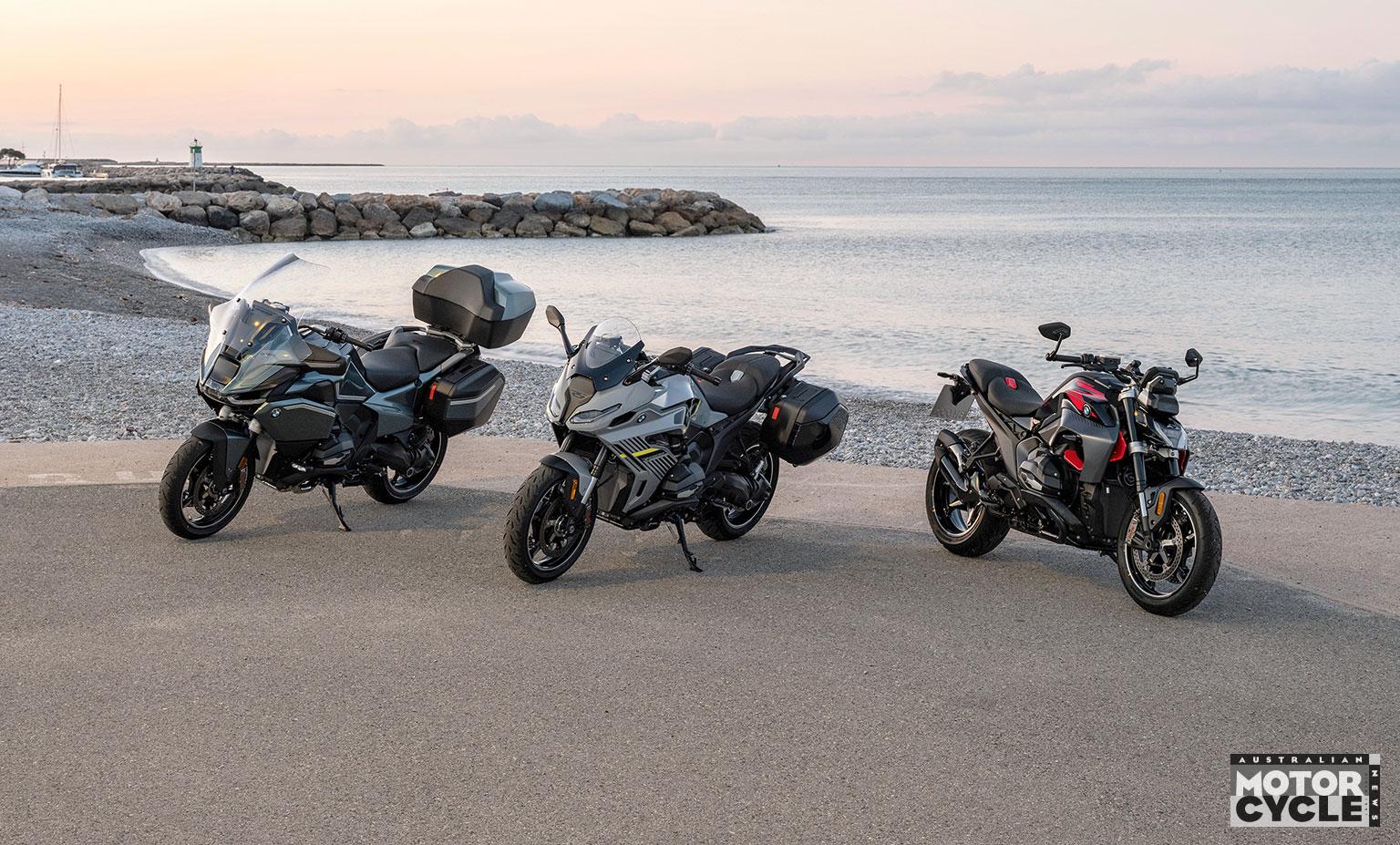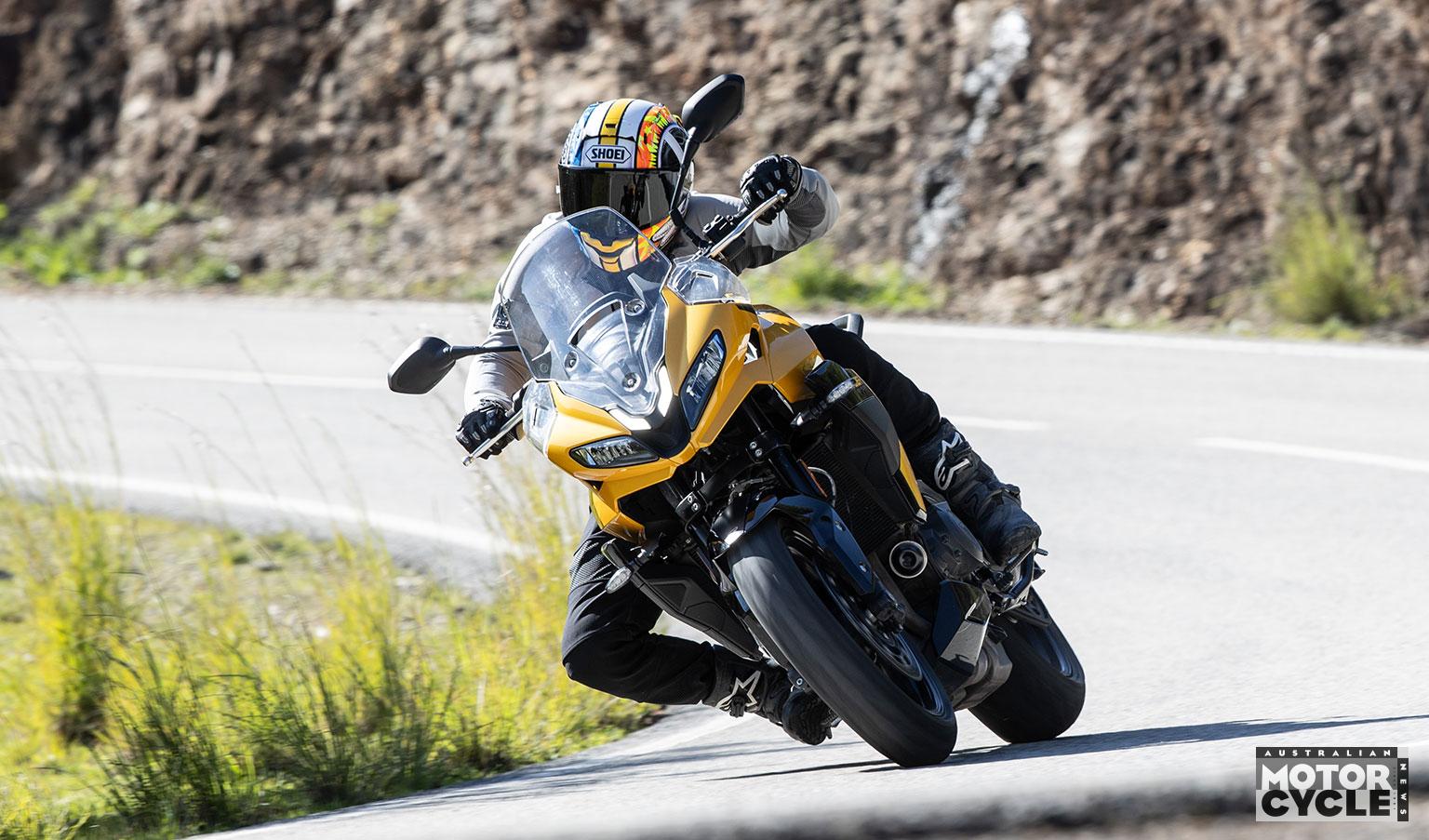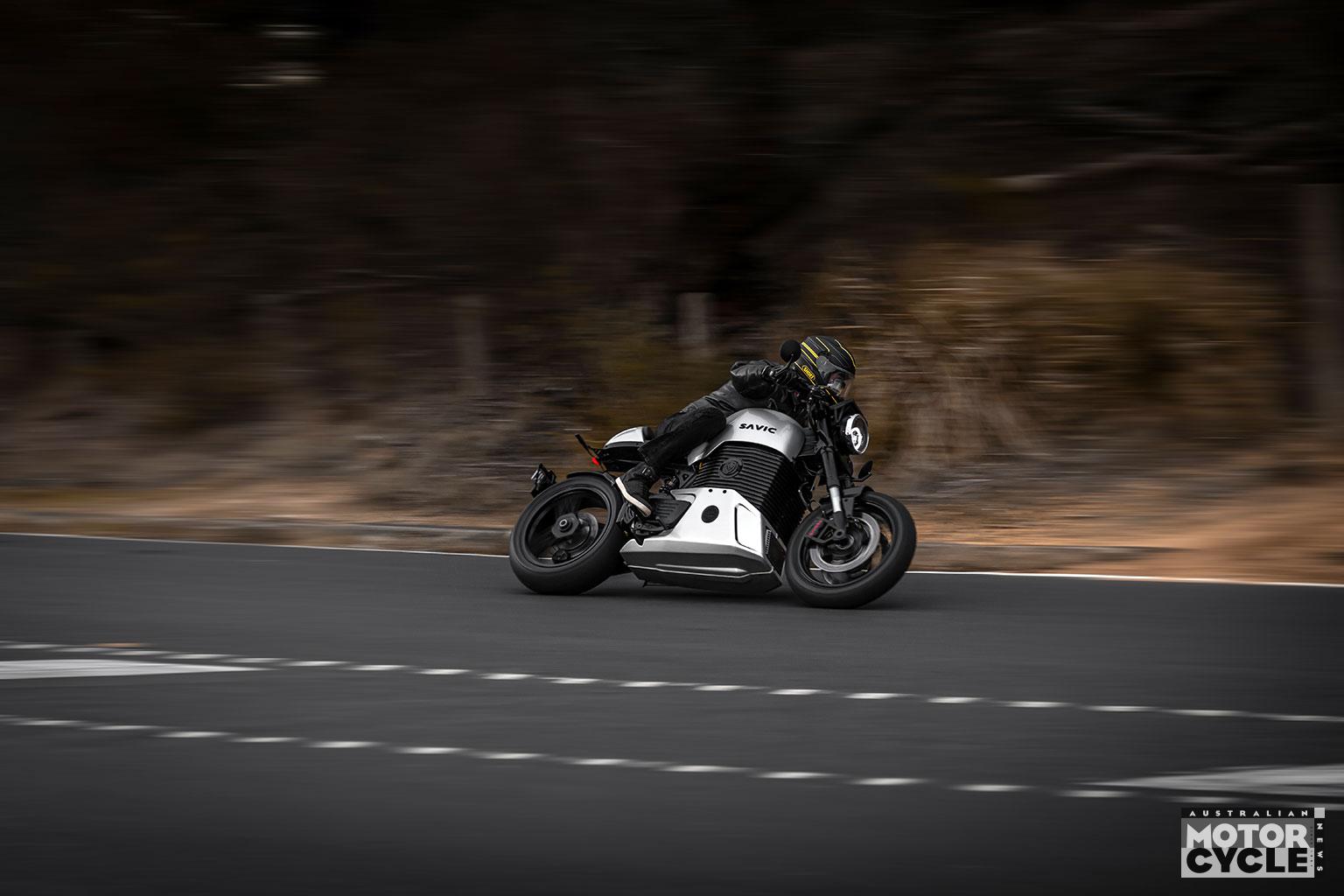Yamaha’s 2025 WR250F isn’t just a dirt bike. Turns out it’s a quarter-litre adrenalin machine that begs to be pushed to its limits – and rewards every twist of the throttle
Since 2001, Yamaha’s WR250F has been hammered around the Aussie bush and enduro tracks. When AMCN asked if I would like to attend the media launch for the latest version in the form of the 2025 model, as a keen enduro rider and ex racer of course I was going to jump at the opportunity.
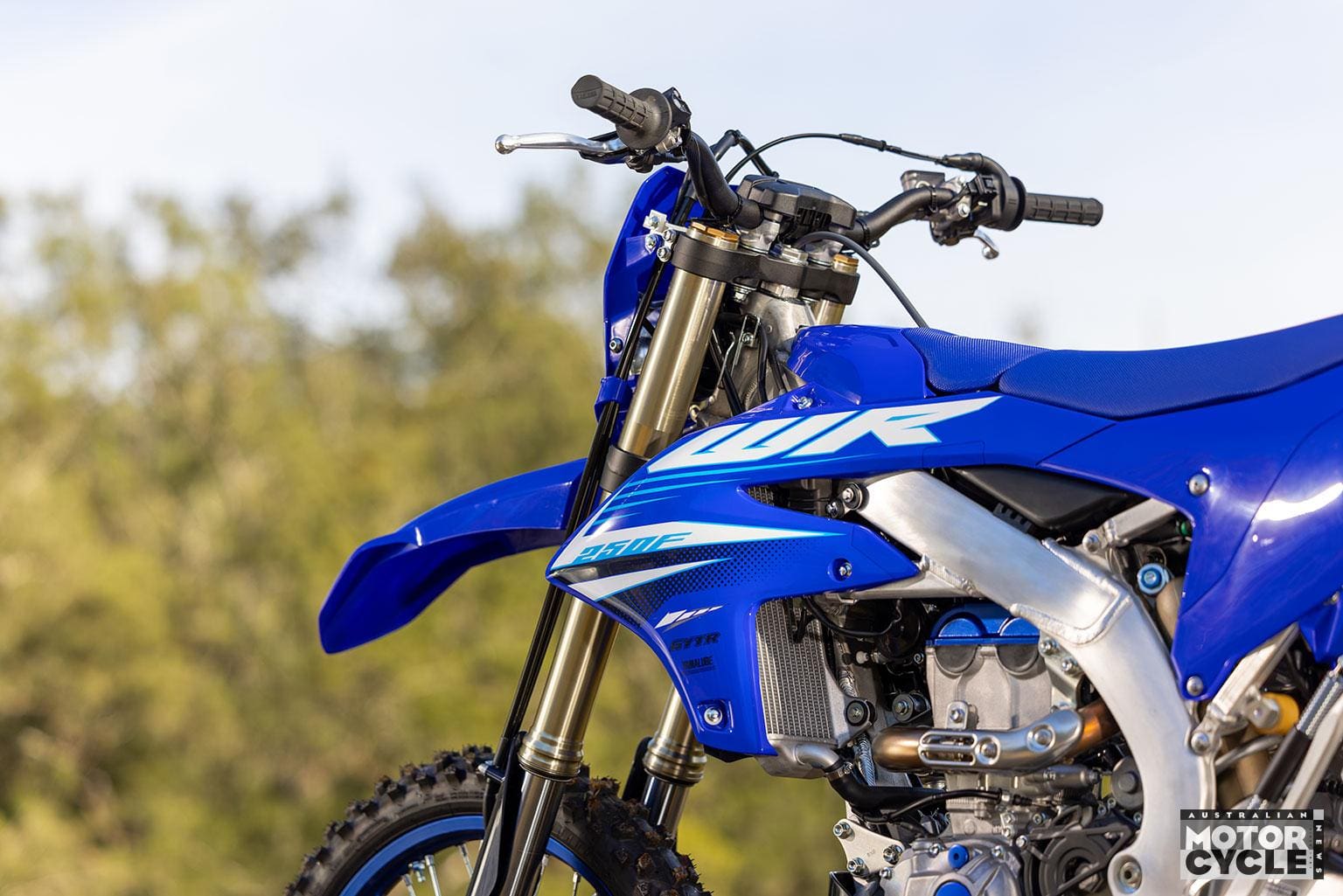
Many of you offroad riders will remember the name Lyndon Heffernan, and it was at his property to the west of Batemans Bay on the NSW South Coast where the day would unfold. Lyndon runs the Yamaha offroad training facility on his 145ha slice of dirt riding heaven – so a huge thankyou first of all to Lyndon and his sons for letting me ride on their stunning property.
I say letting “me” ride – but without too much name dropping, Ben Grabham, AJ Roberts, Jason Cater and 2024
Enduro 1 class champion Kyron Bacon were there on the day as well. As if that wasn’t good enough, I obviously had a brand new WR250F at my disposal. So, if ripping through the bush on a quarter litre four stroke appeals, read on!
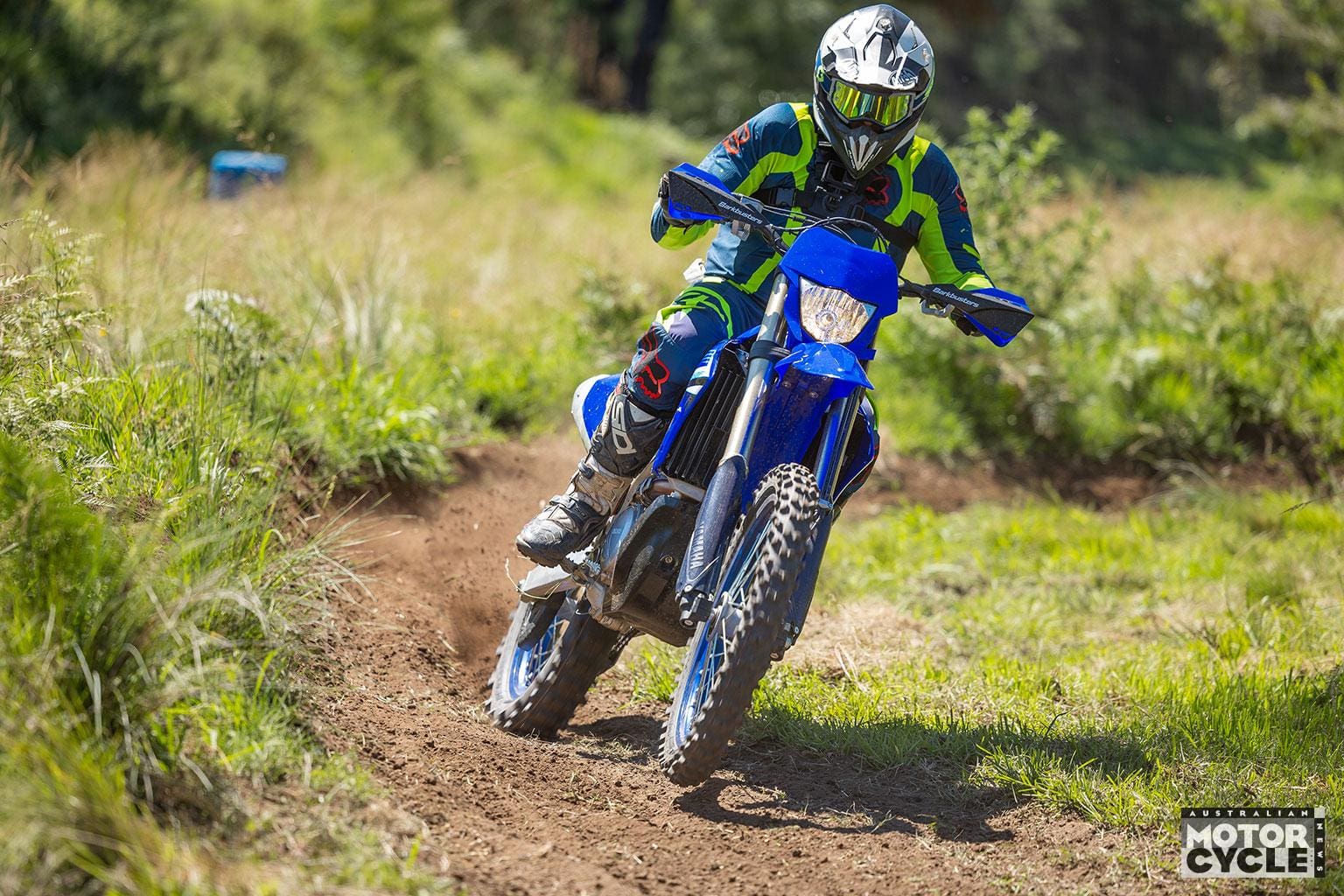
SPOILT FOR TORQUE
Let’s get something straight; 250 four strokes certainly aren’t slow. In fact, the fastest rider outright at the 2024 ISDE was riding one. That means he beat riders on all capacities of two and four stroke machines. And Kyron Bacon, on a WR250F, wasn’t far behind him, finishing the six days of racing in 20th outright (super impressive, and well done, young man).
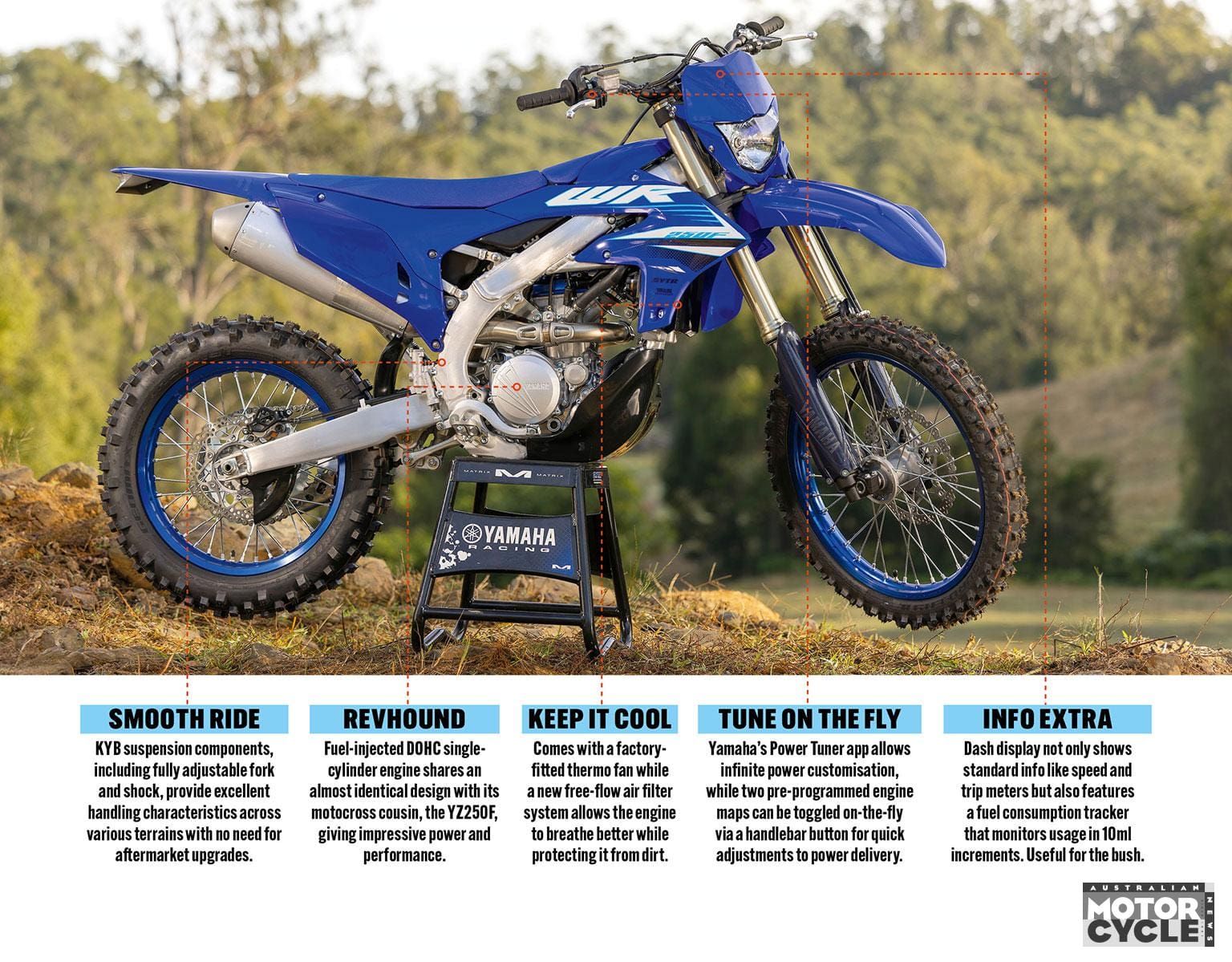
If the last 250 four stroke you rode may have been something like an XR, TT or DR, you’ll be in for a shock when you wind on the throttle on a modern 250 thumper. For reference, I ride a Husqvarna 501. Do I need all that power? Probably not, most of the time, but having ridden big-bore four strokes since 2003, I’m spoilt for torque and sheer grunt.
With 24 years of evolution and sharing an almost identical engine to its motocross cousin the YZ250F, the WR absolutely screams. Yamaha rarely go year-to-year without updates to the engine, suspension, chassis etc – and it shows. The electric start fires up the fuel-injected DOHC single with ease every time, although semi reluctantly when in gear. The cable clutch is as smooth in its function as any hydraulic system and the pull is every bit as light.
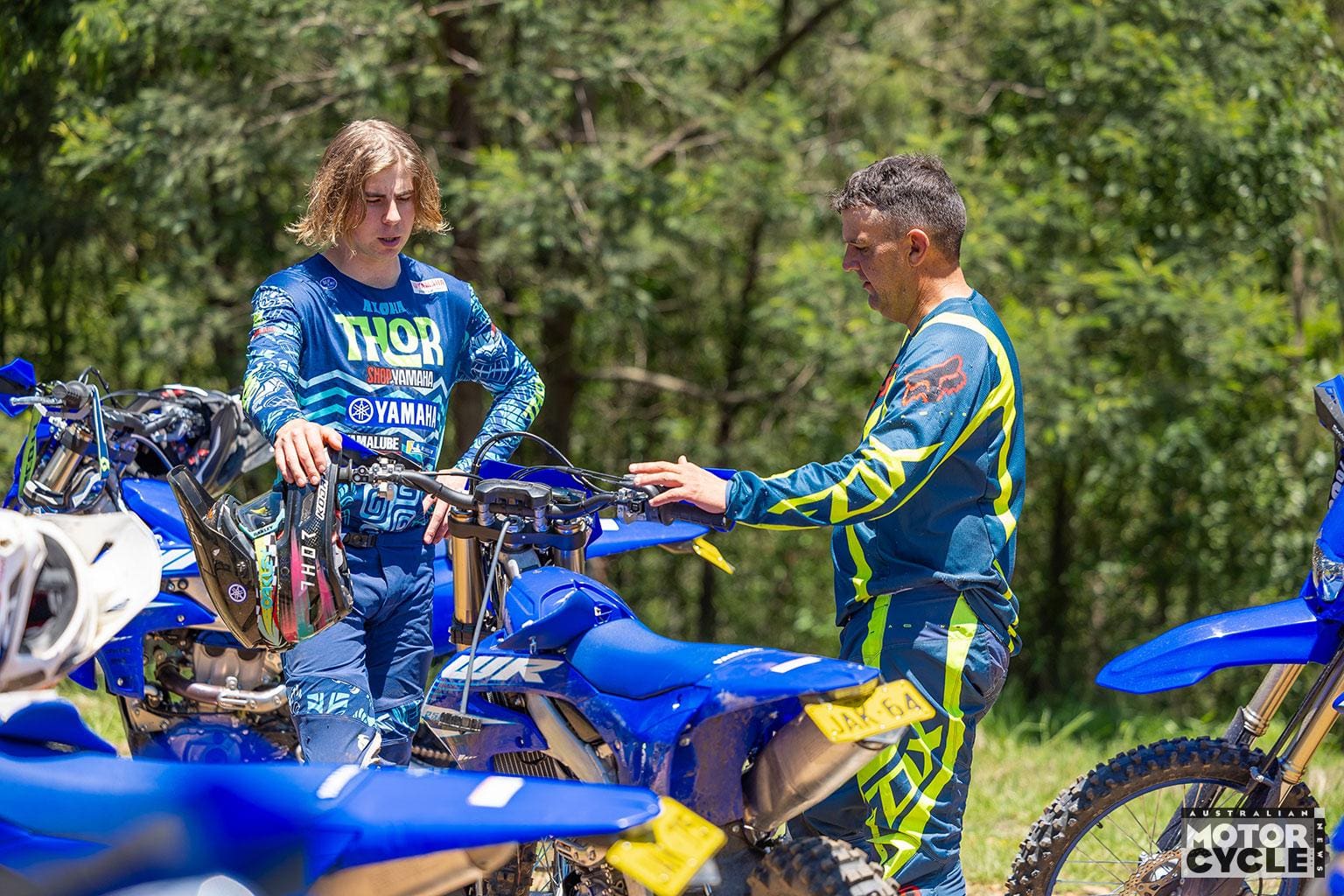
Once mobile, the six-speed gearbox is a joy to use – which is a good thing, because on a 250 you do a lot of gear changes. The gearing is spot-on for everything from tight single track to wide open firetrails, and it’s worth mentioning that Grabbo managed to hit 152km/h before he ran out of room – while later stating he could’ve gone quicker. Now that’s impressive.
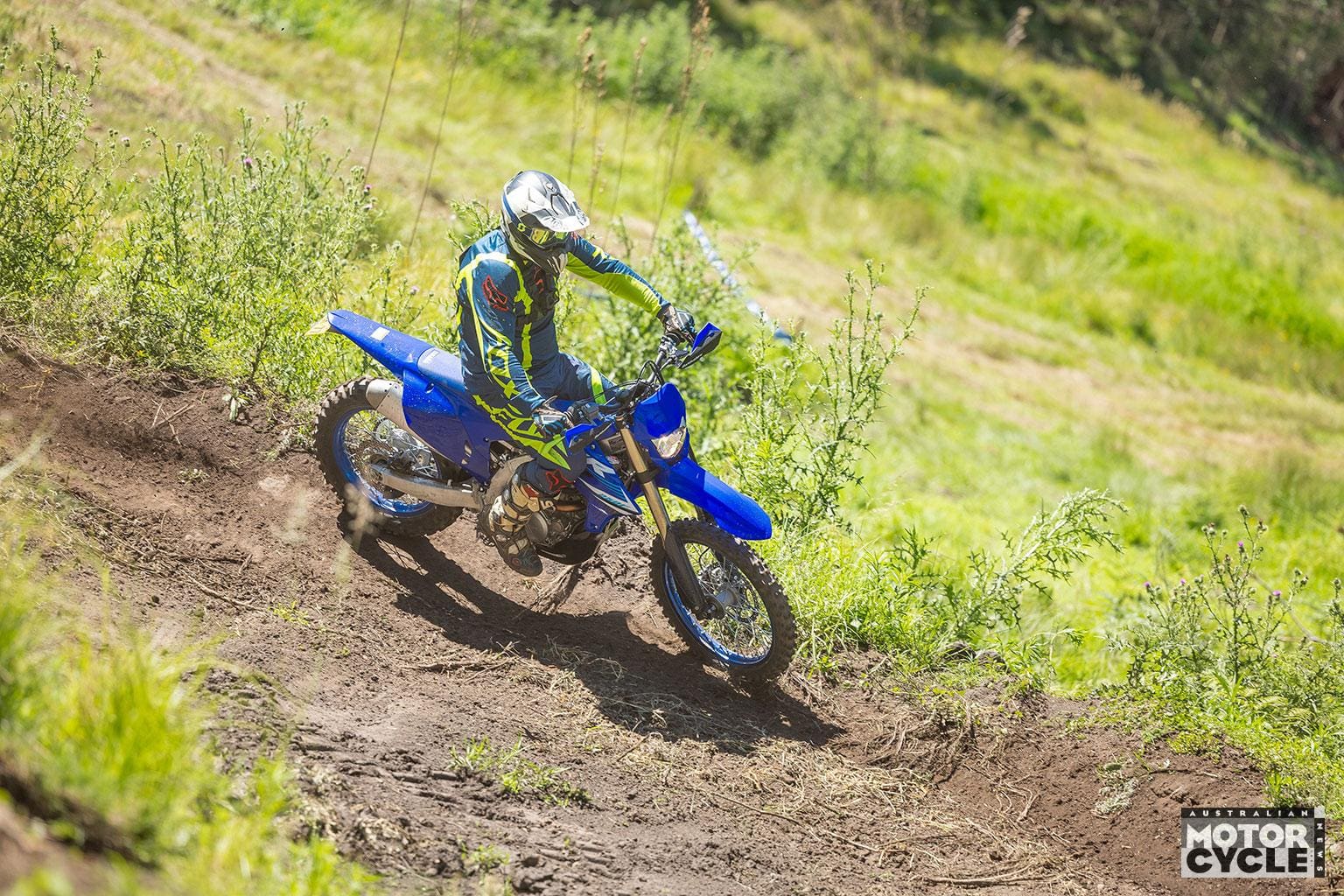
What caught me out for the first hour or so was being in too tall a gear; this was my problem, not the bike, as I’m used to riding a 500. But 250s love to rev, and once I got my head around the characteristics of it I was having a ball. You almost have to remove any mechanical sympathy from your mind and let them rev, and when I thought I was revving it hard it probably still had a few thousand revs up its sleeve! Give this thing a handful and you will be blown away by just how hard a 250F can go; it’s amazing.
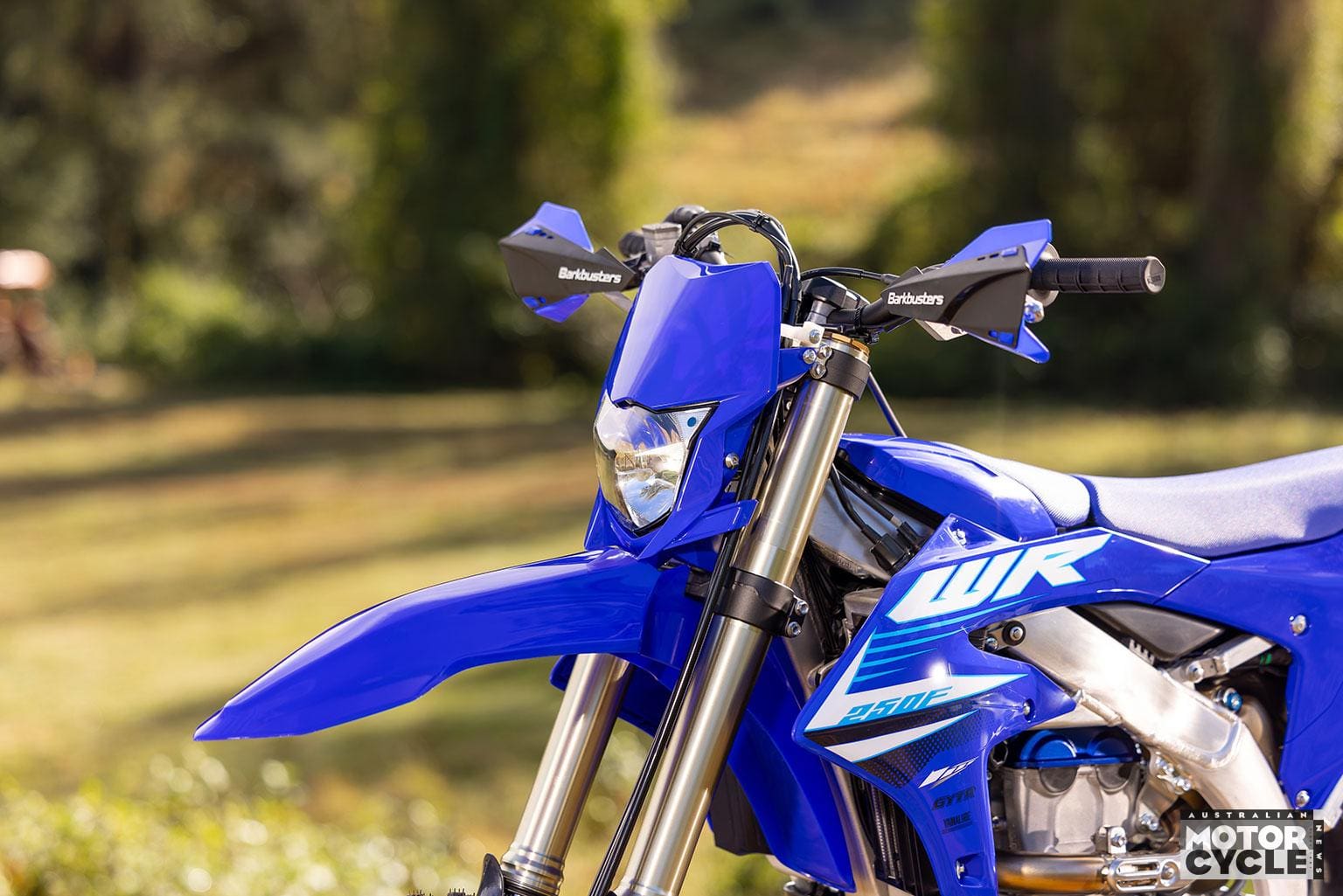
Initially I found it a little easy to stall and thought it could benefit from a bit more flywheel mass, but as I got used to it those feelings faded. In typical Japanese fashion, the engine produces almost no vibration, remaining silky smooth all the way to the somewhat stratospheric rev limiter. When I spoke to Yamaha Marketing Manager Sean Goldhawk on our lunchbreak, he said to ride it as if you are trying to blow it up.
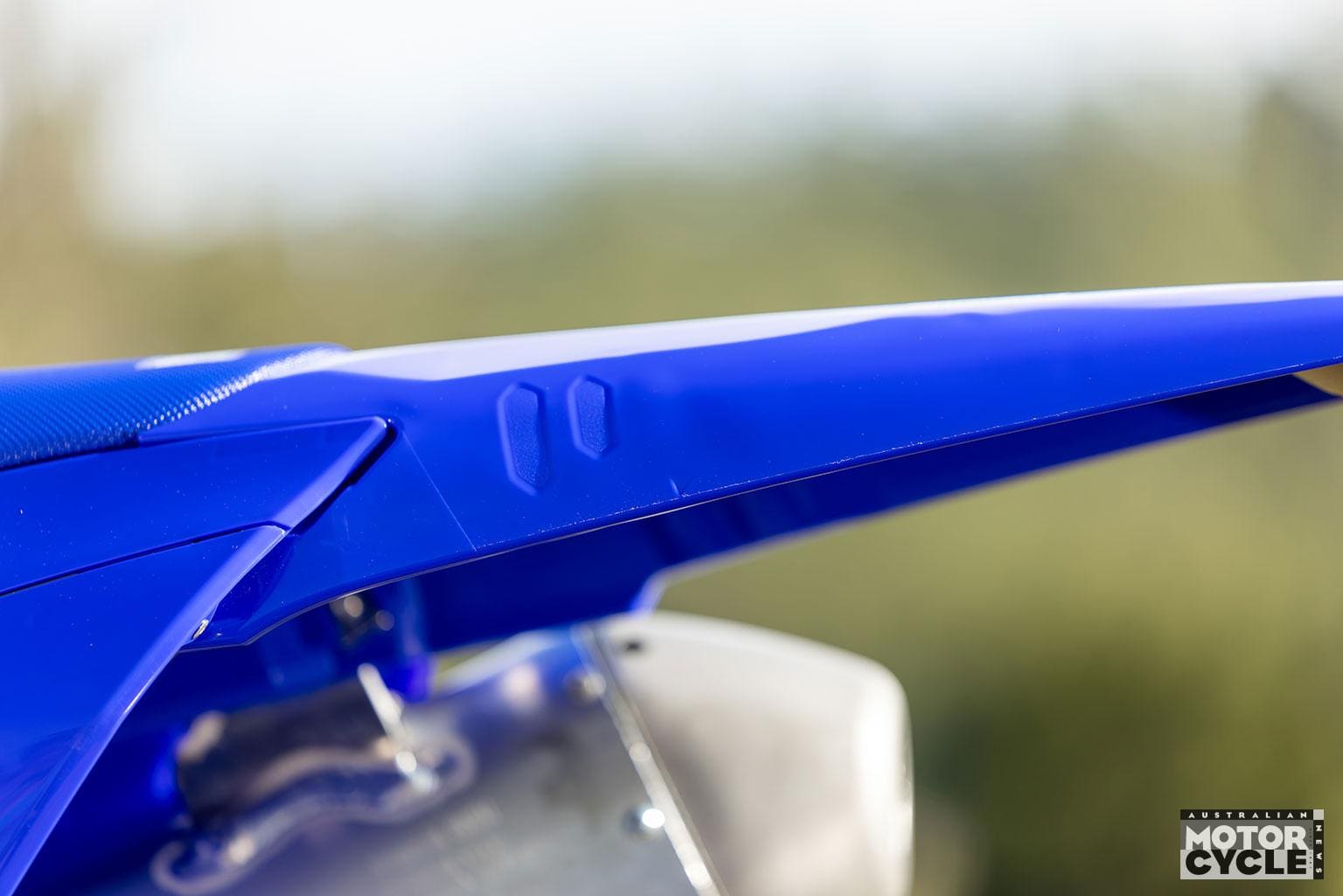
I didn’t quite push it that hard. But Kyron Bacon certainly does. When chatting to him I asked if he did the full six days of racing at the ISDE on the same piston and he said that he did. Interesting also was the fact that Kyron’s racebike is essentially stock with the exception of suspension mods tailored to him and an Akrapovic exhaust. The power can be tailored almost infinitely via the Yamaha power tuner app, which is a very cool feature included with the bike. Two pre-programmed engine maps can be toggled on the fly by a handlebar button and were noticeable in their differences, with an aggressive and slightly softer power delivery available that’s ideal for slippery conditions.
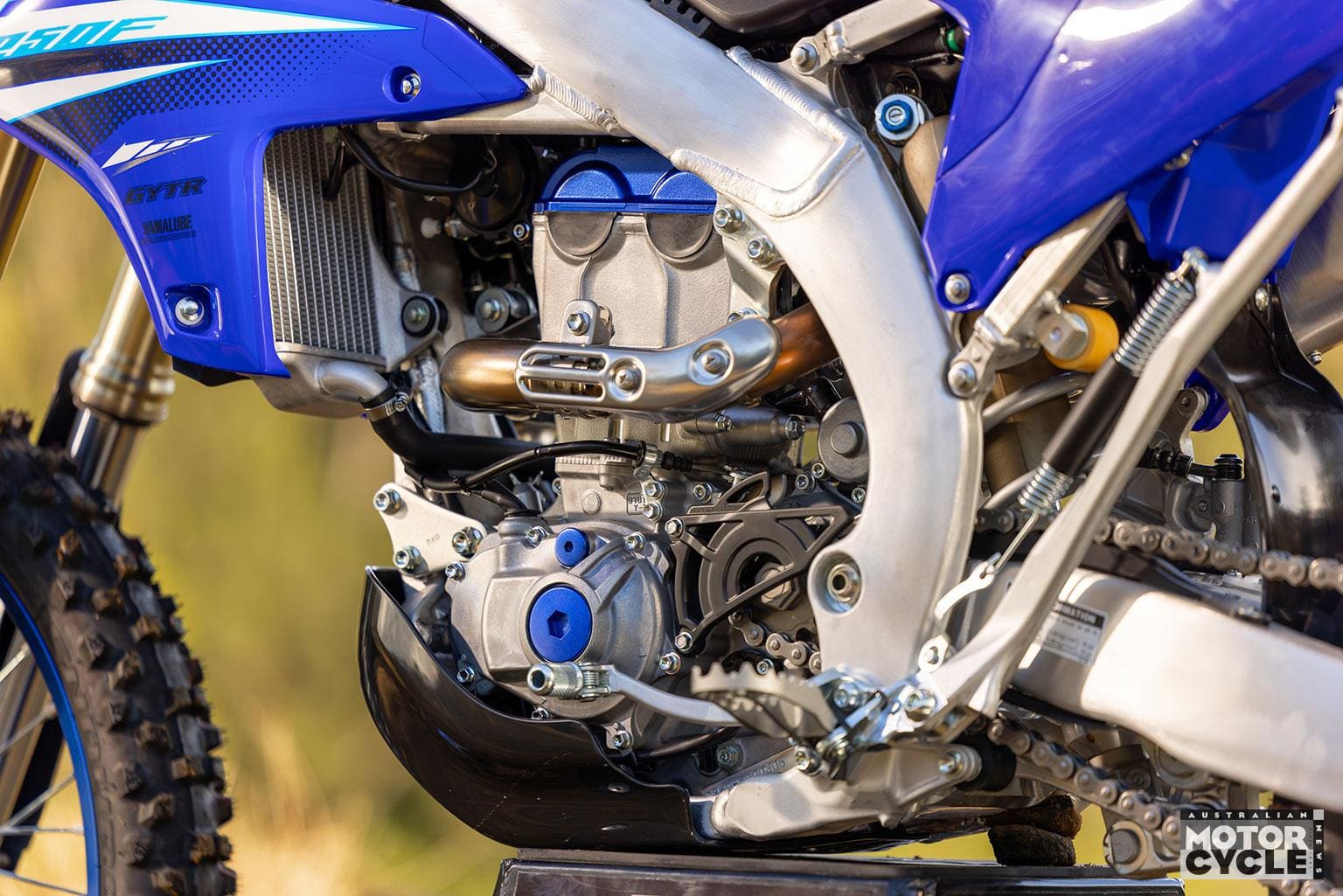
The day we rode the bikes it was well into the low 30s but the Yammy kept its cool thanks to the factory-fitted thermo fan. Mere mortals like myself would get years of reliable riding out of this engine just with routine maintenance. Air filter access is easy and well away from the dust-churning rear wheel. These bikes have always had a very solid reputation for long-term reliability, which is a testament to how well made they are.
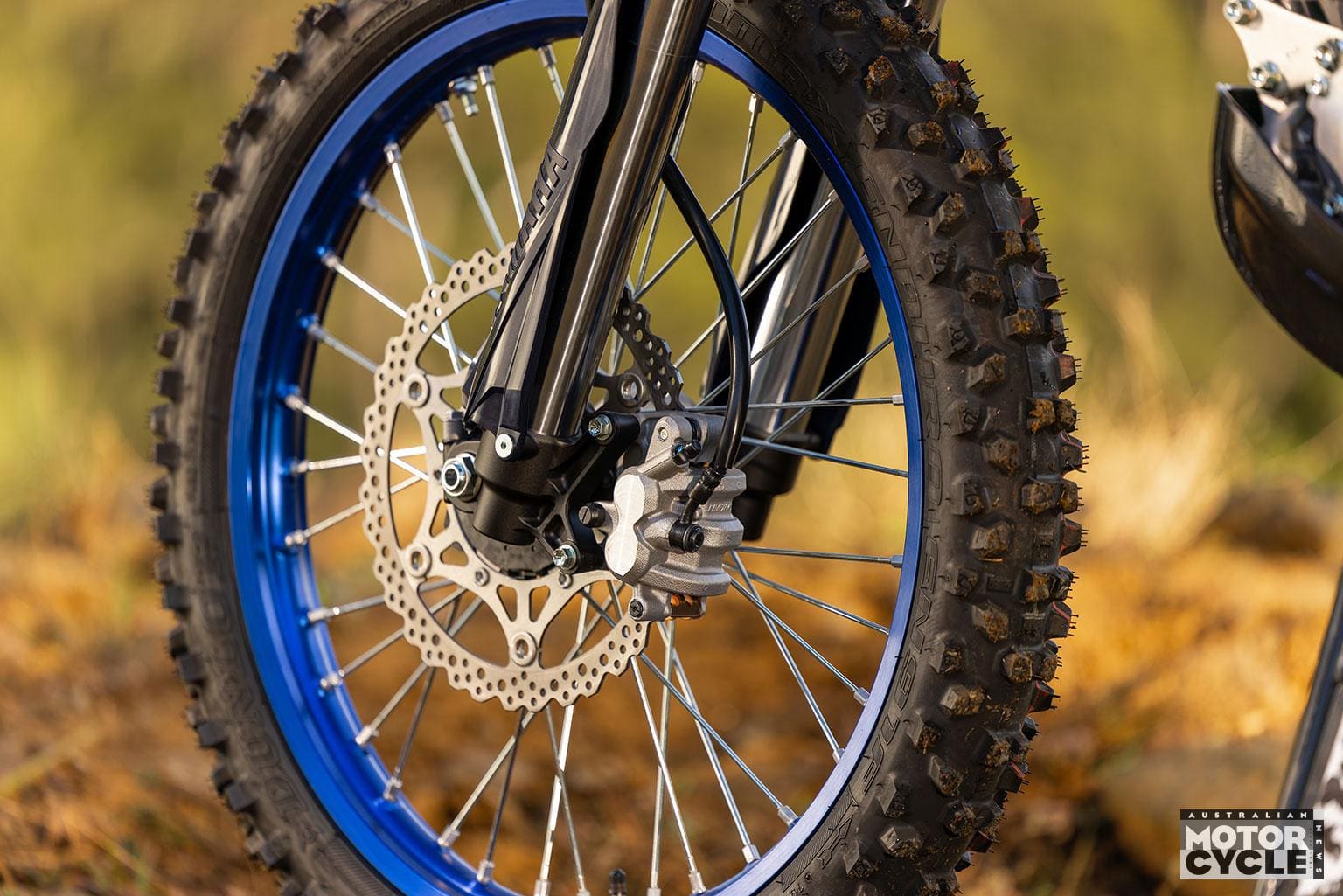
PERFECT FOR ALL PACES
When it comes to handling, the WR – for a stock standard bike – was as good as it gets. Our day’s ride consisted of a grass track, enduro loop and small but fun motocross track during the morning, then after lunch we went for a trail ride. In short, we experienced every type of terrain in a short period that most Aussie trail riders would generally cover in a lifetime.
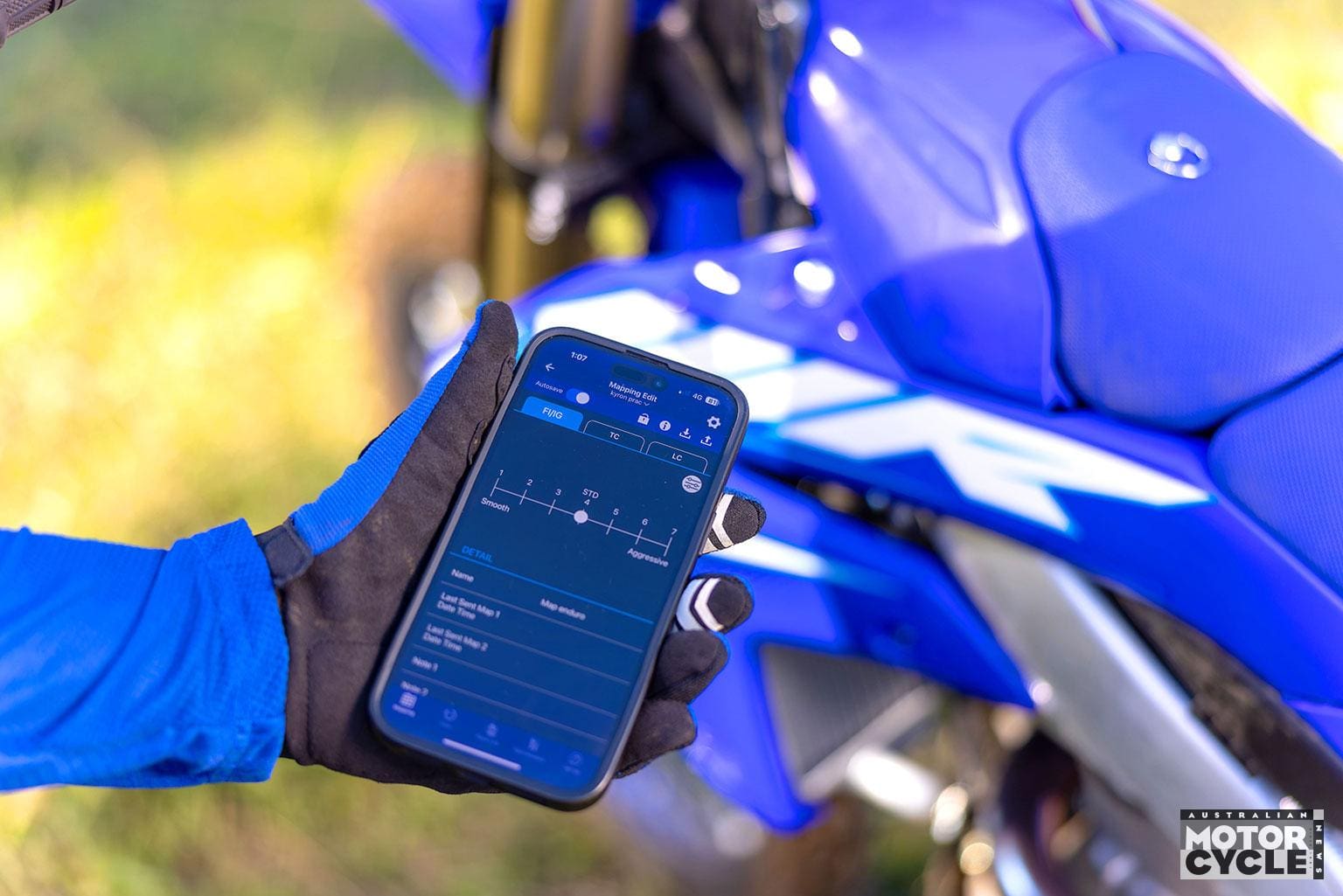
Lyndon’s property was layered over with some of the nicest dark loamy soil imaginable, while the trail ride featured some skatey hard pack with an abundance of erosion control mounds and pristine creek crossings.
The KYB fork and shock were a standout. When you can jump on a brand new stock standard bike and feel comfortable within minutes it’s usually a sign of good things to come.
The WR felt equally as good riding fast as it did going slow. It settles beautifully into corners whether tight or open, and the way it will hold a line through a rut is impressive. It turns on a dime – but thanks to that trademark Yamaha stability, it remains rock solid as the speed rises.
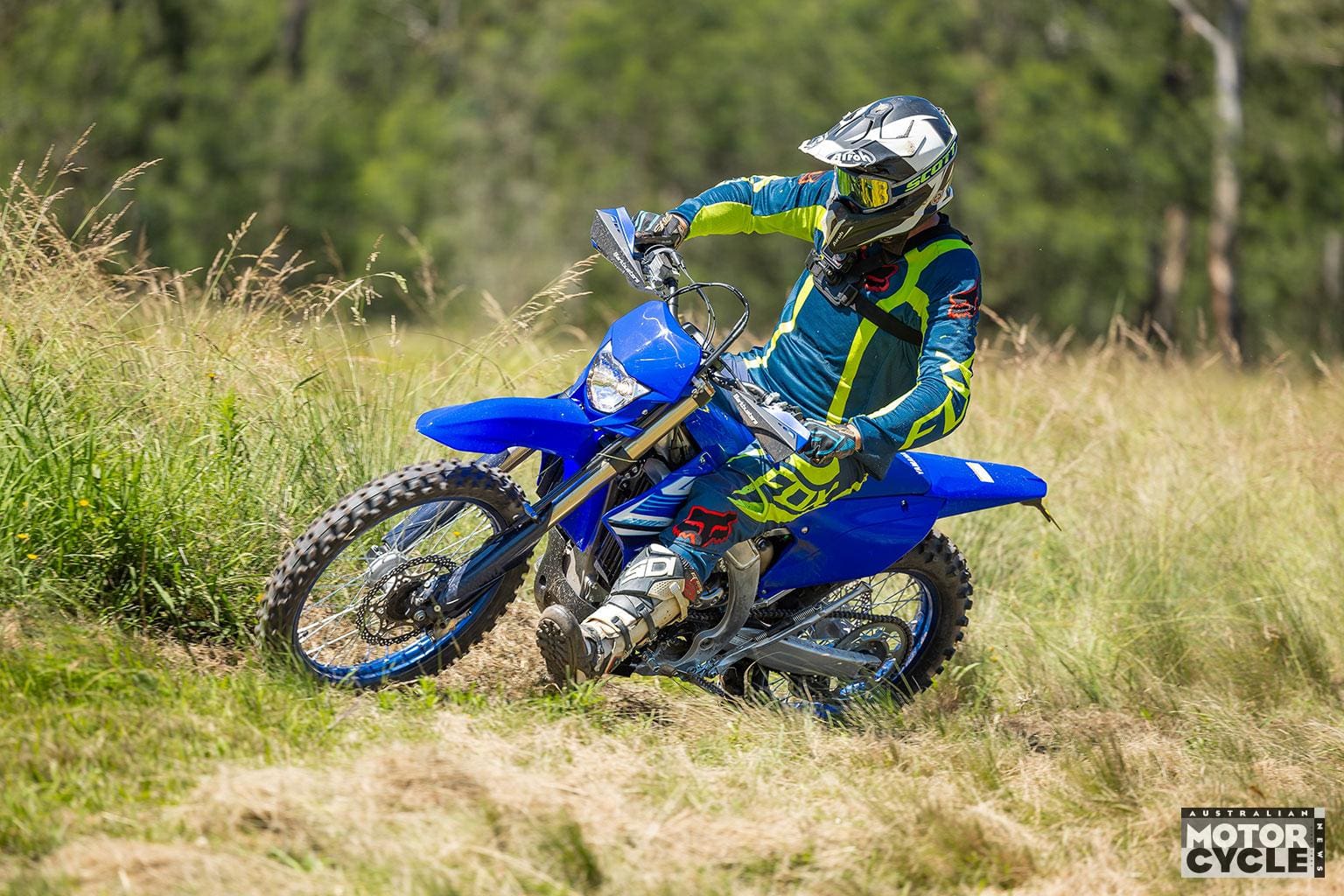
I’ve raced and finished the Finke Desert Race five times. If I was to do it on a WR250F I wouldn’t bother fitting a steering damper, it’s that good. Both front and rear resist bottoming out over the bigger jumps – and I weigh around 90kg.
The fork firms up through the stroke nicely but remains supple and compliant over small tree roots and rocks, while the rear shock does everything well and keeps the little WR planted and driving hard.
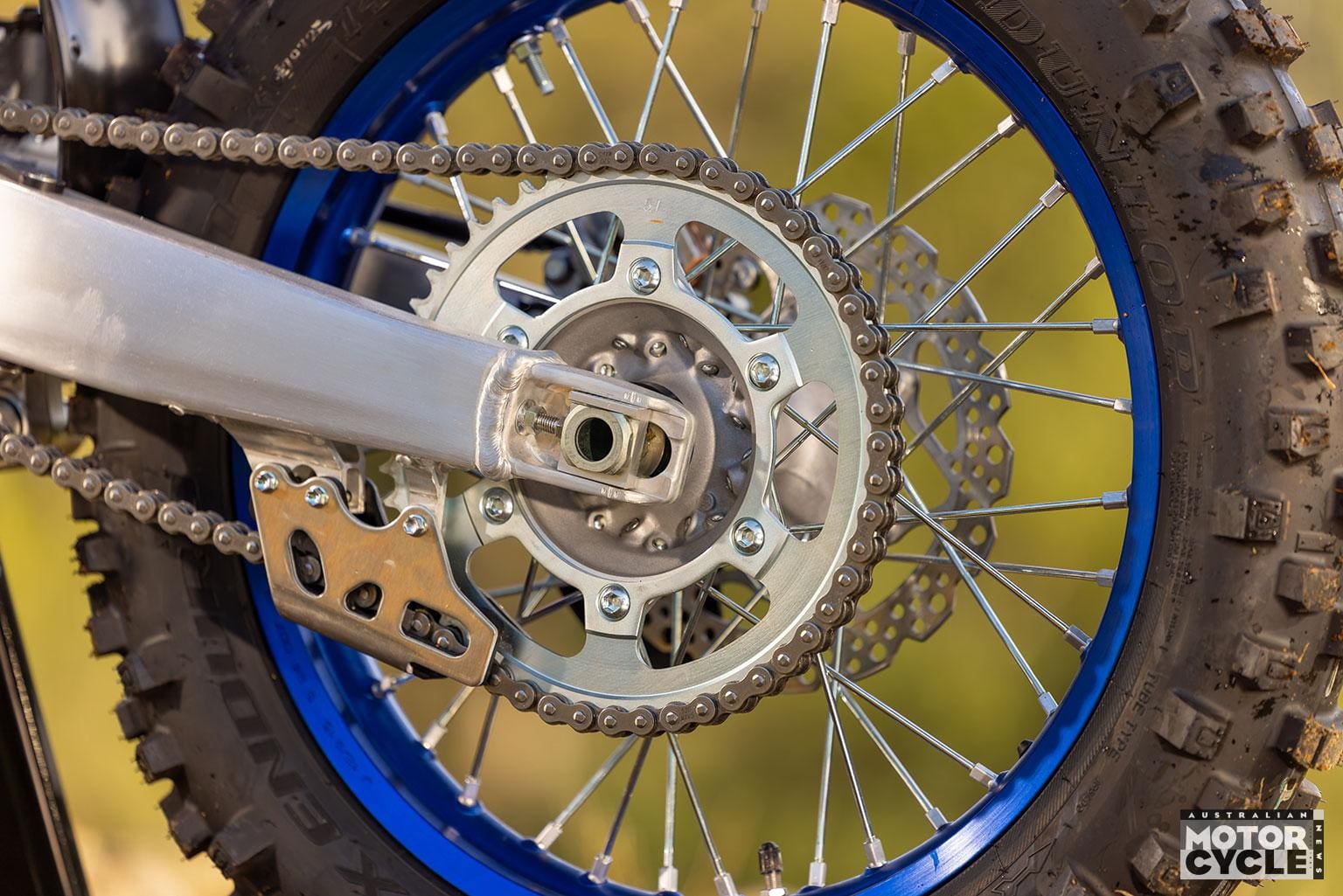
As I mentioned, our trail ride featured dozens of creek crossings; crystal clear water revealed silky smooth river stones that were very slippery but not once did the bike step out of line or do anything unexpected. You can spend thousands of dollars on enduro bike suspension – the WR engineers have nailed it. I didn’t even adjust the compression, rebound or sag. If it was my bike and I had more time to play with it, I could get it even better but it was very good as it was. Needless to say, both the rear shock and fork are fully adjustable.
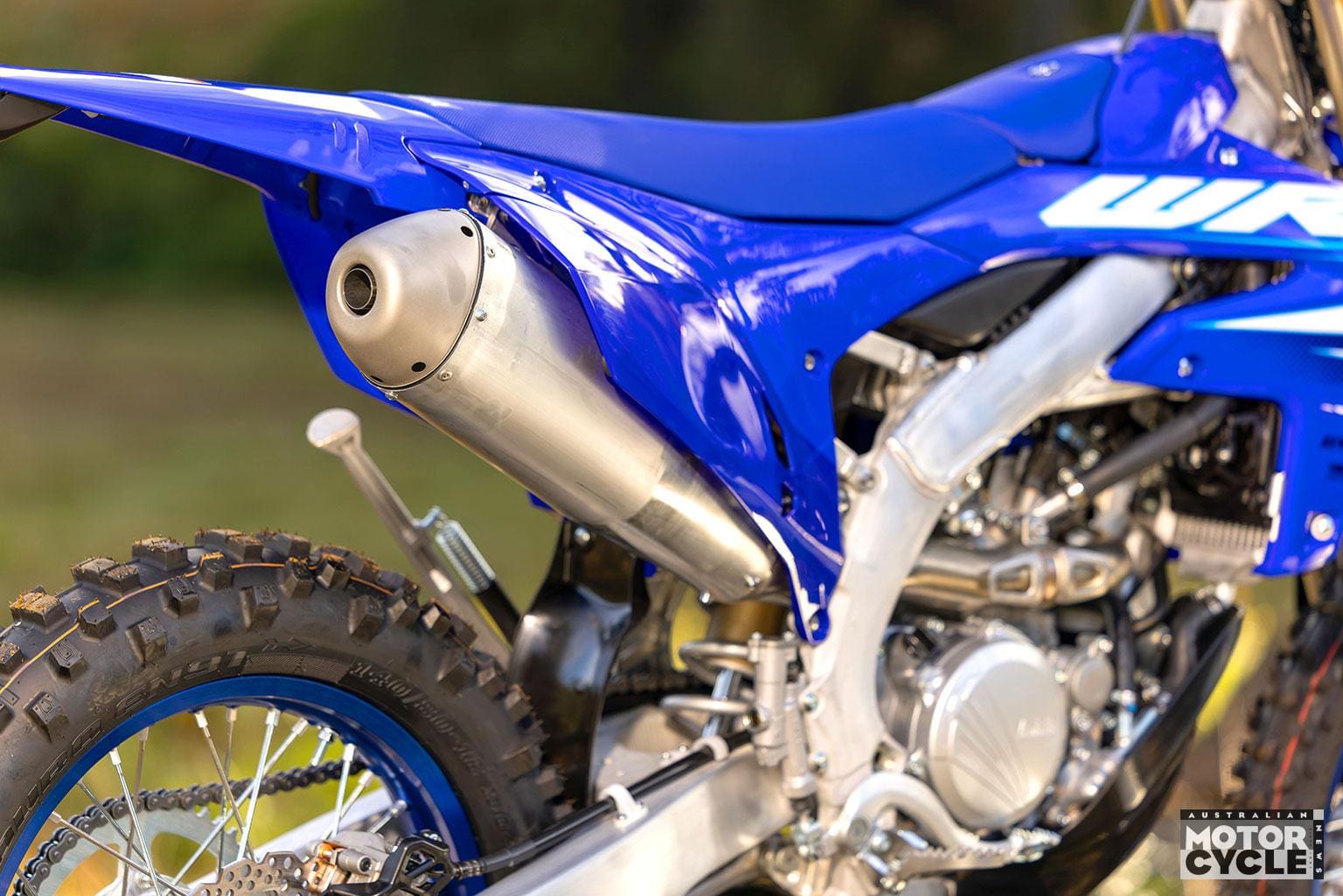
PERSONAL TOUCHES
Ergonomically the WR was very good for me. The footpegs are nice and wide with plenty of grip and the seat is a lot more forgiving than my Husky. Standing or sitting feels neutral and encourages aggressive riding but if you want to just sit down and cruise along, then that feels good too. There’s something about it though that just feels right and that’s great for confidence and pushing hard.
I’m 180cm tall. When standing, I wasn’t too hunched over and wouldn’t need bar risers. The WR is very narrow, and fully fuelled weighs just 113kg – which is only a couple of kilos heavier than its euro competition.
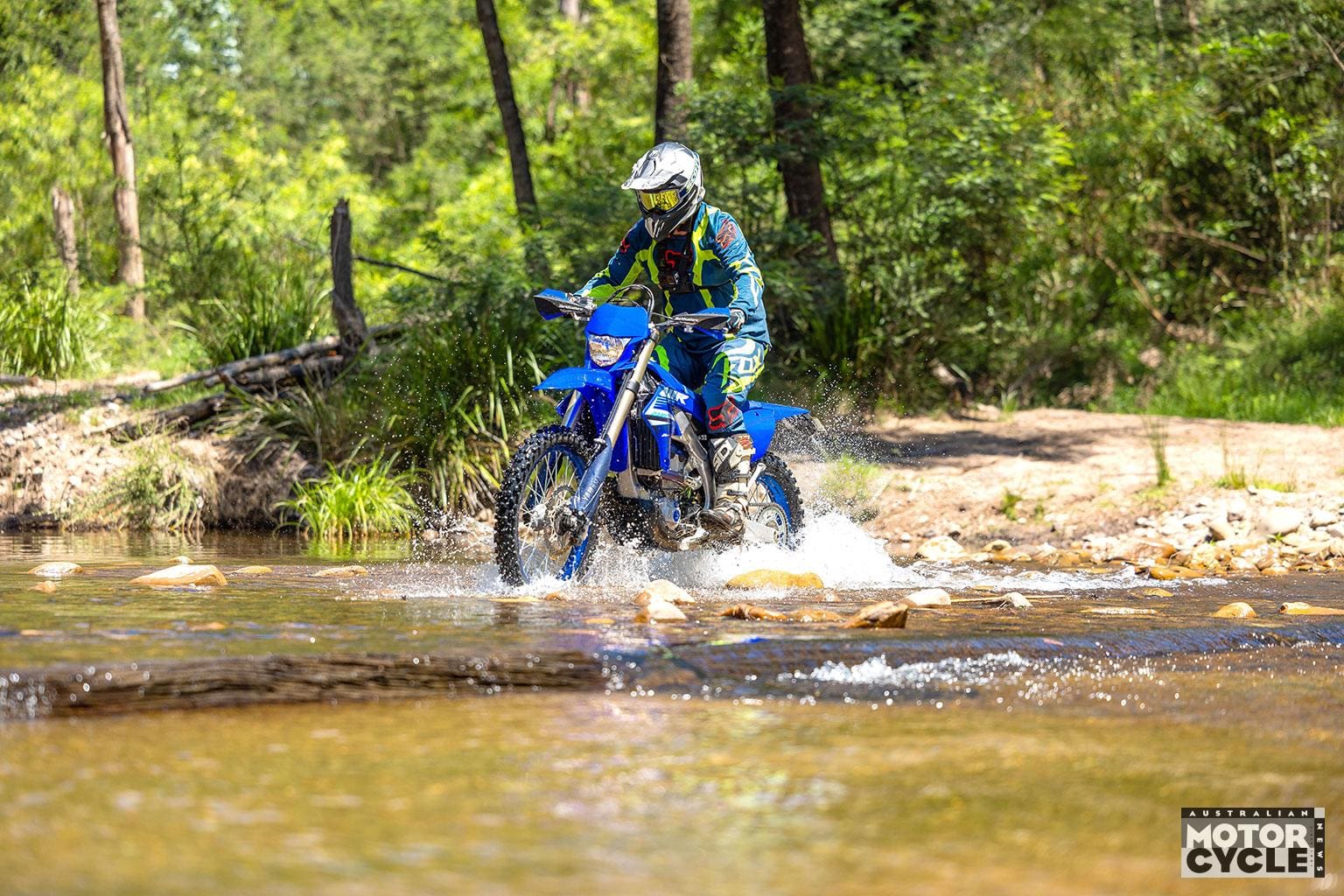
Years ago the Yamaha WR range was a little on the heavy side but that is clearly no longer the case. The aluminium frame is a work of art when you take the time to look at it closely, and a standard plastic bash plate is a nice touch. It looks reasonably sturdy but no doubt many aftermarket options will be fitted to owners’ bikes. Although if you’re not belting into big logs and rocks, save your money and leave it.
The dash display is easy to read and has trip meters, speed, average speed and odometer but also tells you how much fuel you’ve used. When you fill up the 7.4-litre tank you can reset it to monitor fuel usage in 10ml increments.
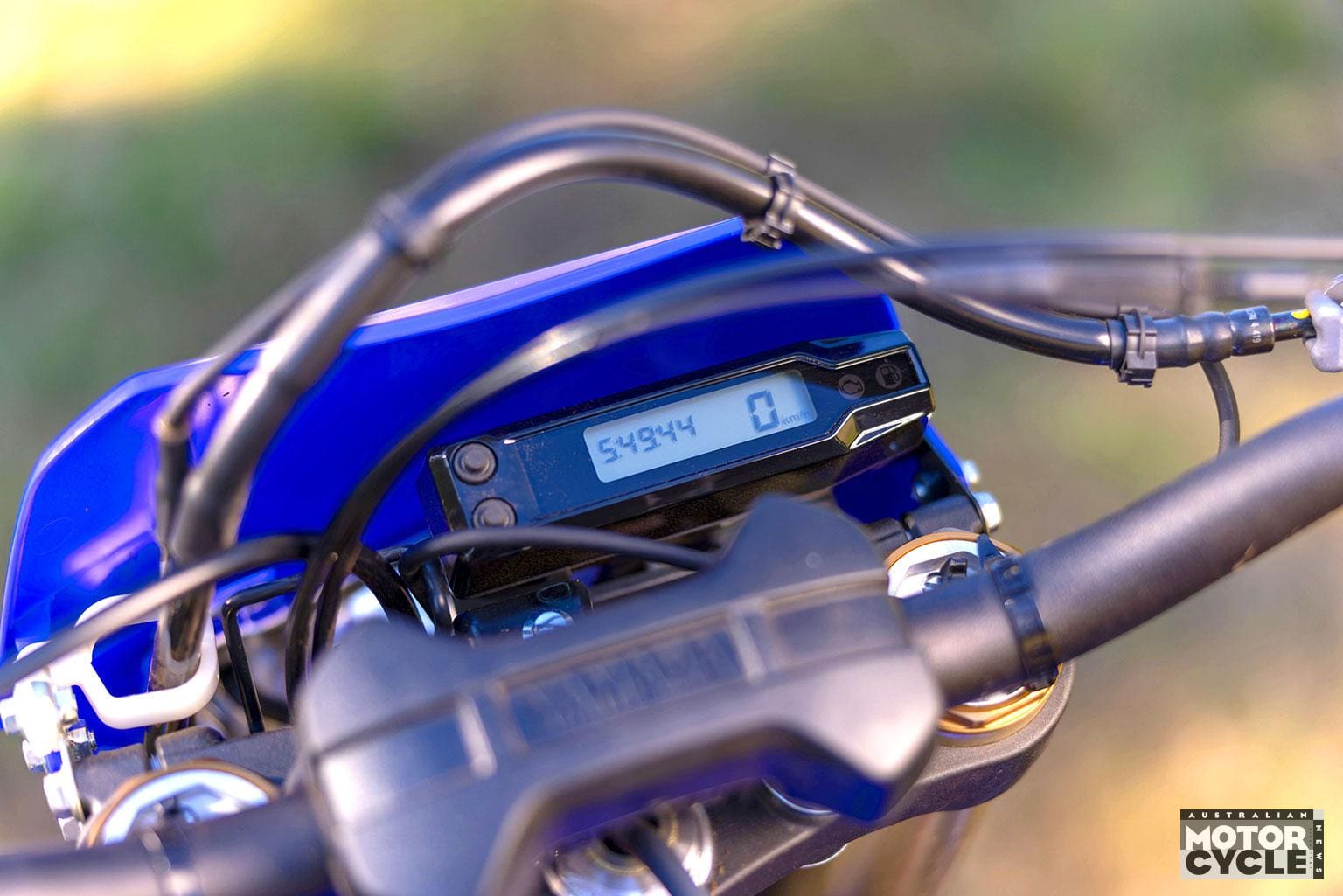
About the only thing I didn’t like on the WR was the handgrips. That realistically is only a $30 problem and usually something I change anyway.
Dunlop street-legal knobbies were fitted to the test bikes and while they performed well, I’d be changing them to my favourite non-road-legal Michelin Star Cross 6 as I never ride an enduro bike on the road for more then a couple of klicks at a time.
Non-wraparound handguards are fitted as standard but I’d be fitting full wrap-around-style ones if the bike was mine. Once again, this is just personal choice.
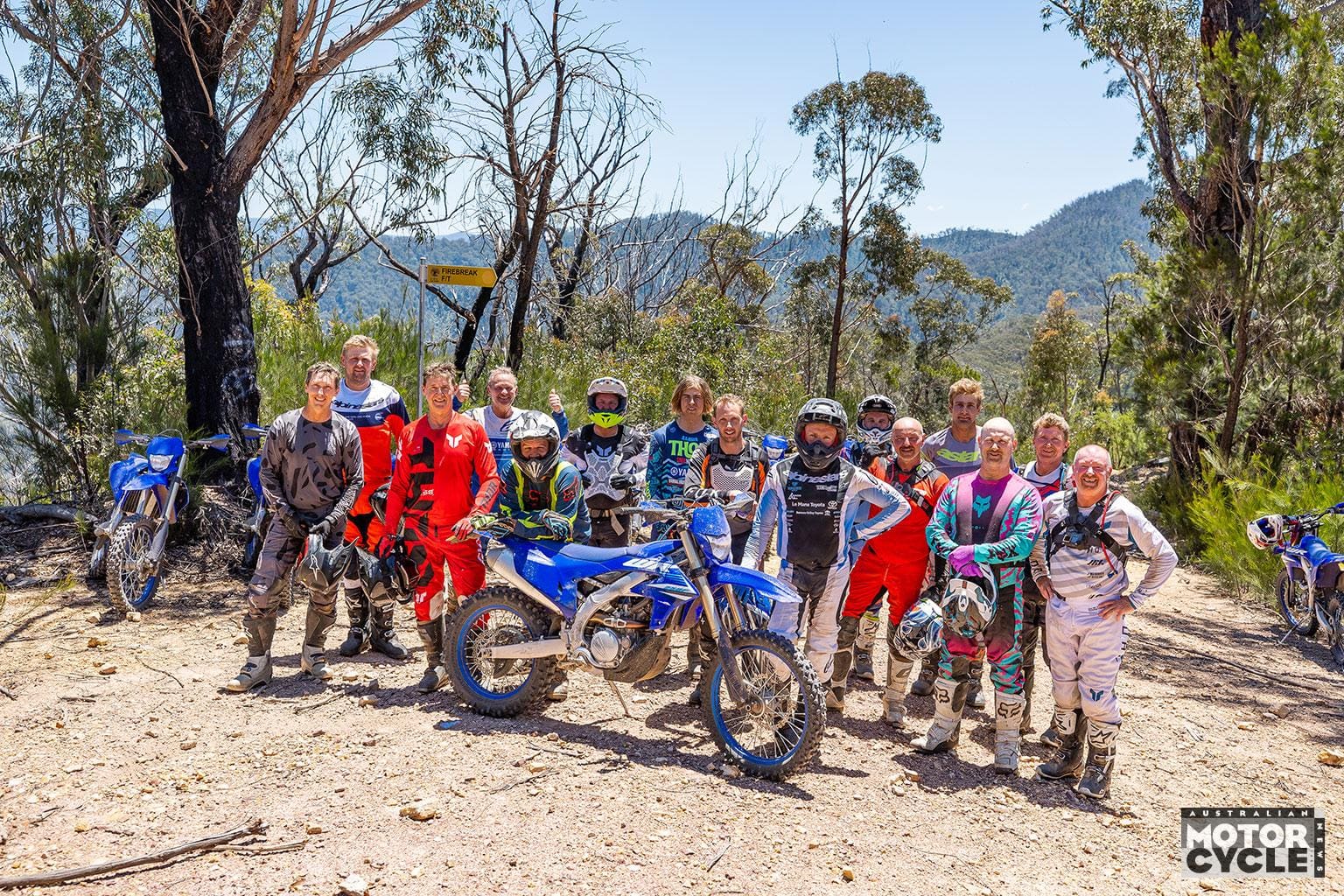
Braking on the WR is taken care of by Nissin. The system is every bit as good as any Brembo package I’ve ever used. One finger is all it takes on the front to bring the Yamaha to a stop, and the feel and strength is perfect. The rear is equally as good, offering all the power and modulation you will ever need.
THE VERDICT
Riders such as Josh Green and AJ Roberts have been heavily involved in the development of the WR range over the years – and it shows. When a company listens to riders of that calibre and can produce a bike for the masses that works for such a range of users, then high praise is deserved.
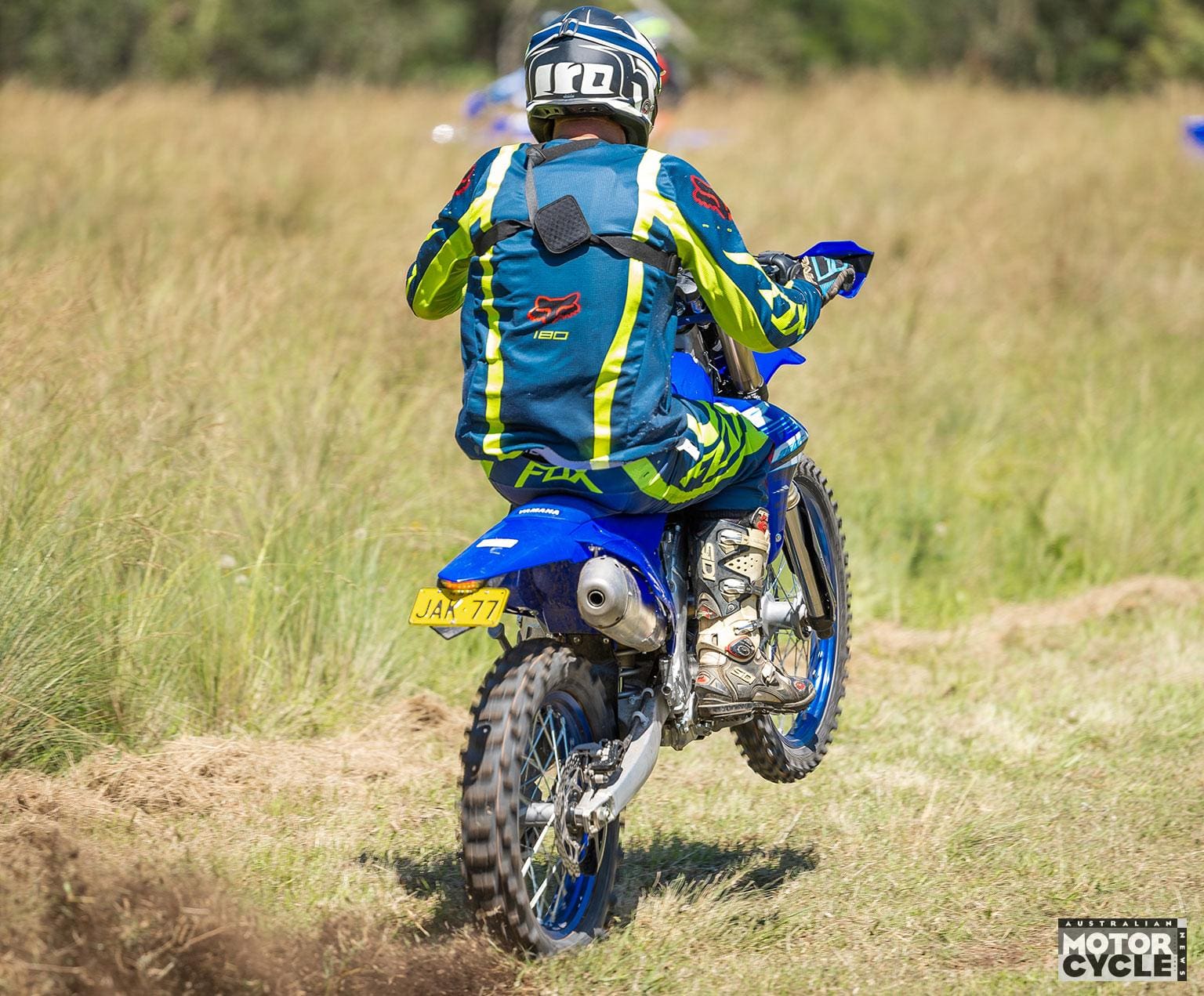
I had a ball on the WR; I knew it was going to be good… but I honestly didn’t think it was going be this good. It’s not for everyone. But what bike is? It’s a bike that a brand new rider could jump on and progress. But it’s also a bike that a pro can do amazing things on. It does reward someone who rides fast and pushes hard but has a soft mellow side to it as well.
It’s super light, handles beautifully and performs beyond belief.
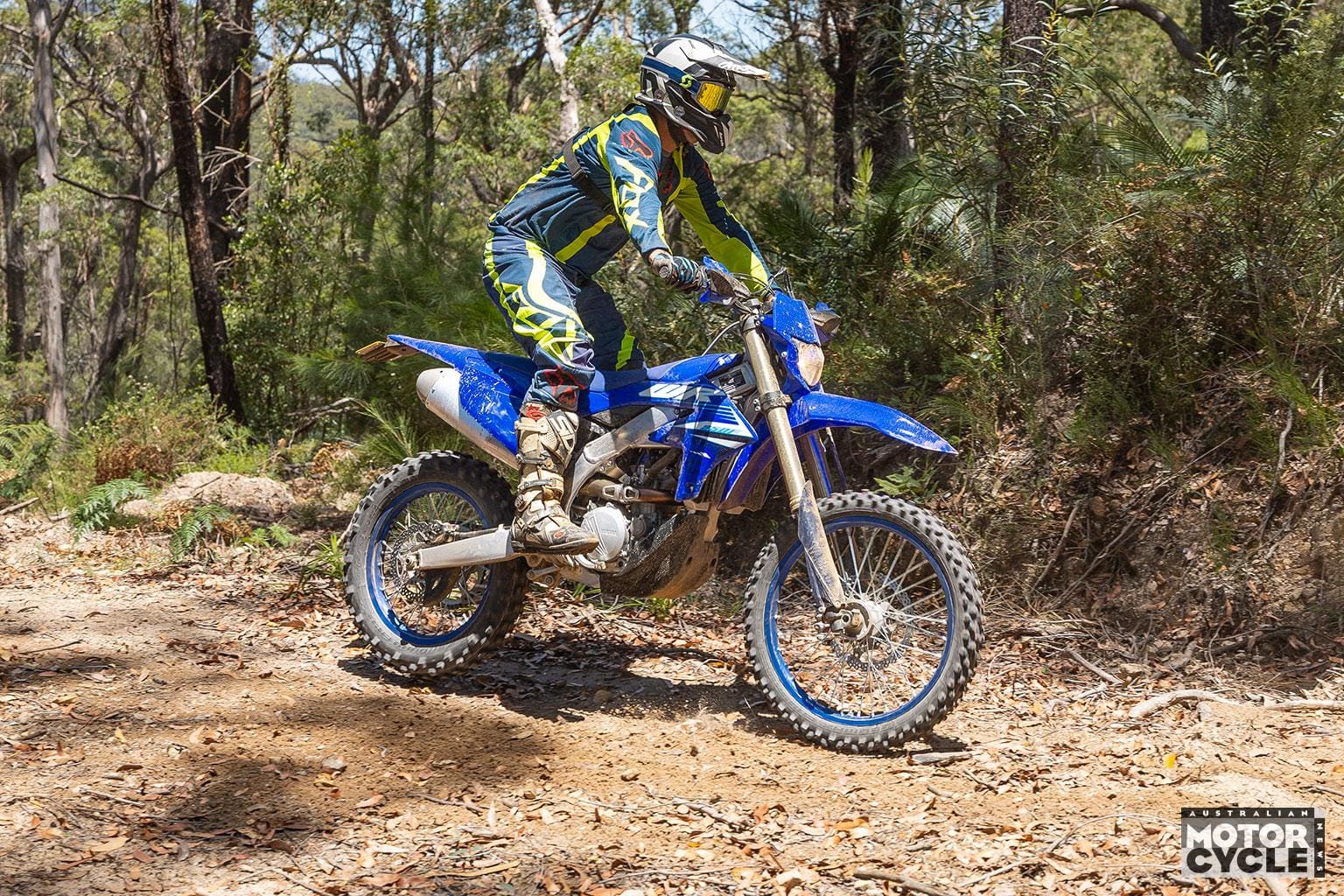
As a rider of a 501, I kept asking myself: would I buy a 250? The answer is yes. It was so much fun, I was smiling the whole time under my helmet.
Is it less fatiguing than a big bore? Yes and no. For me, I found it a lot harder to keep a consistent pace on the 250F. You have to be really on the ball to get the most out of it if you want to go quick. But for enduro riding and single track, it’s brilliant for a rider of all levels. It’s well proven what they can do in the hands of a pro.
In summary, the WR250F does everything well. It used to be, in a way, considered by many to be a trail bike that you could race. Having ridden this 2025 model, I can assure you that it is very much a race bike you can trail ride.
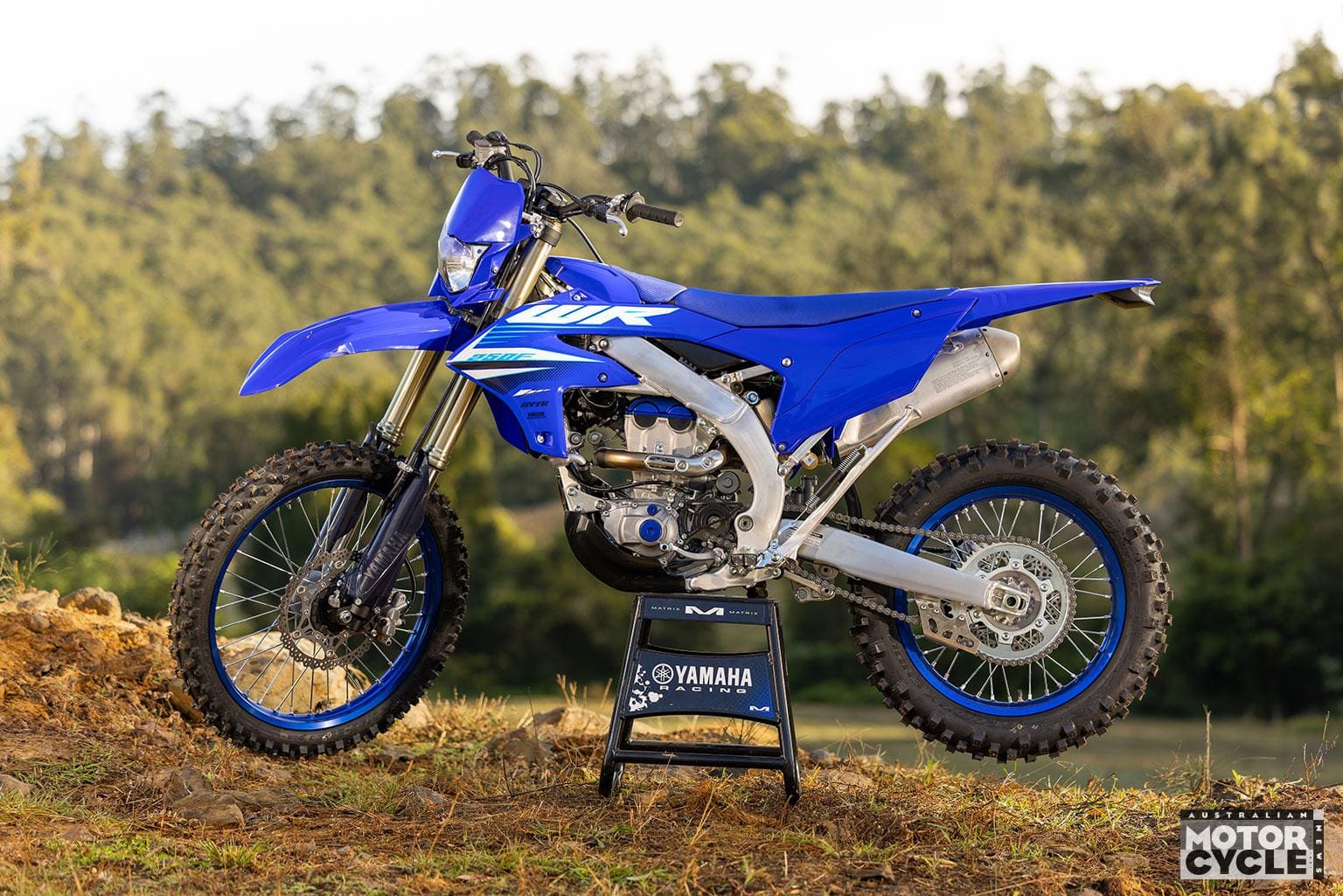
PROS – Hard to believe they can fit a road-legal light and rego plate to this but they can!
CONS – Can stall easily in low revs, needs constant gear changes for optimal performance, and having to stay vigilant with throttle control may make it less appealing for casual riders
ONROAD READY
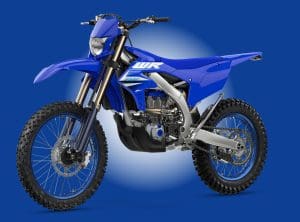
Yamaha notes that Australian WRF models are all supplied in full ADR spec to allow full road rego, including indicators, mirrors and horn. An off-road kit designed for closed-course competition comes free, including brushguards, front fender and lightweight rear light and tail section.
SPECIFICATIONS
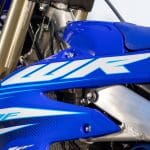
ENGINE
Engine Type 250cc liquid-cooled DOHC 4-stroke; 4 titanium valves
Bore x Stroke 77.0mm × 53.6mm
Compression Ratio 13.8:1
Fueling Mikuni fuel injection, 44mm body
Transmission 6-speed; multiplate wet clutch
Final Drive Chain
CHASSIS
Suspension/Front KYB fork with speed sensitive damping; fully adjustable, 300mm travel
Suspension/Rear KYB single shock; fully adjustable, 306mm travel
Brakes/Front Hydraulic disc, 270mm
Brakes/Rear Hydraulic disc, 240mm
Tires/Front 80/100-21 Dunlop Geomax MX33F
Tires/Rear 110/100-18 Dunlop Geomax MX33
DIMENSIONS
LxWxH 2170mm x 825mm x 1265mm
Seat Height 955mm
Wheelbase 1470mm
Rake (Caster Angle) 27°
Max. Ground Clearance 330mm
Fuel Capacity 7.4L
Wet Weight 113kg
BUSINESS END
Warranty 30 Day (Limited Factory Warranty)
Price $16,799 ride away
CONTACT
